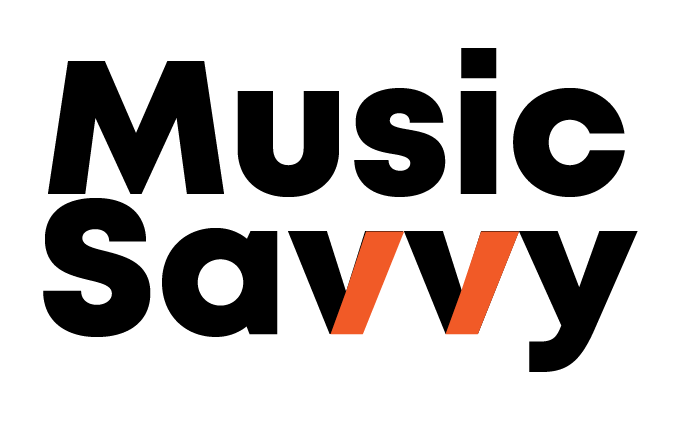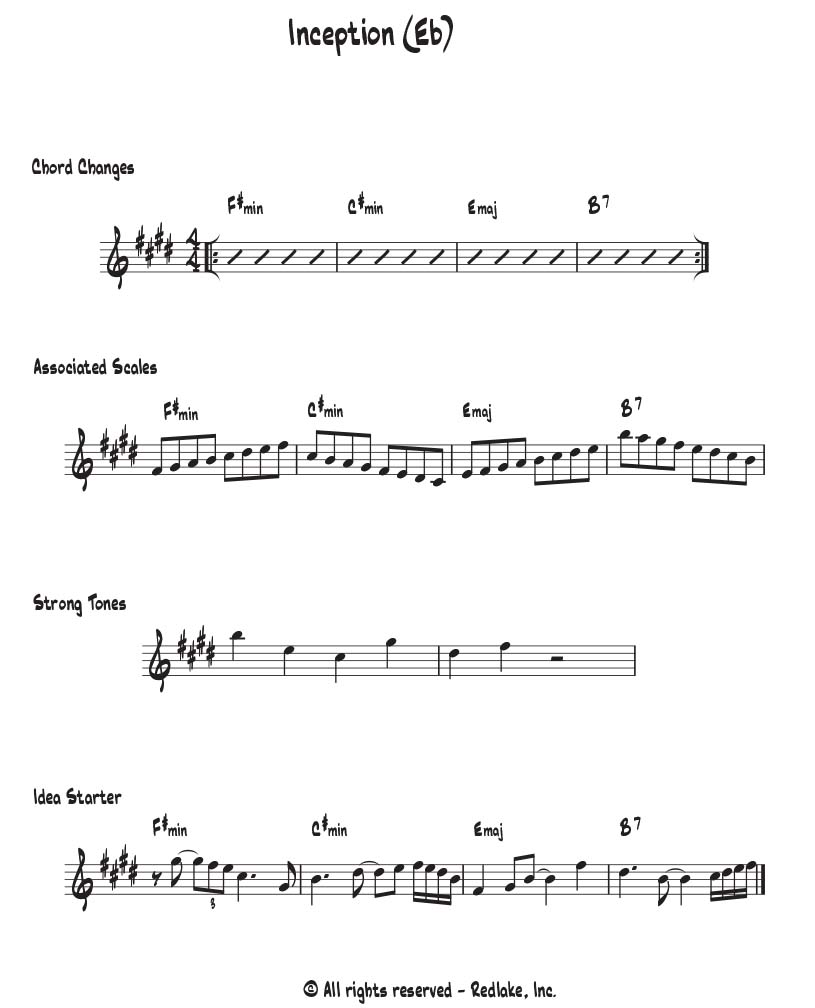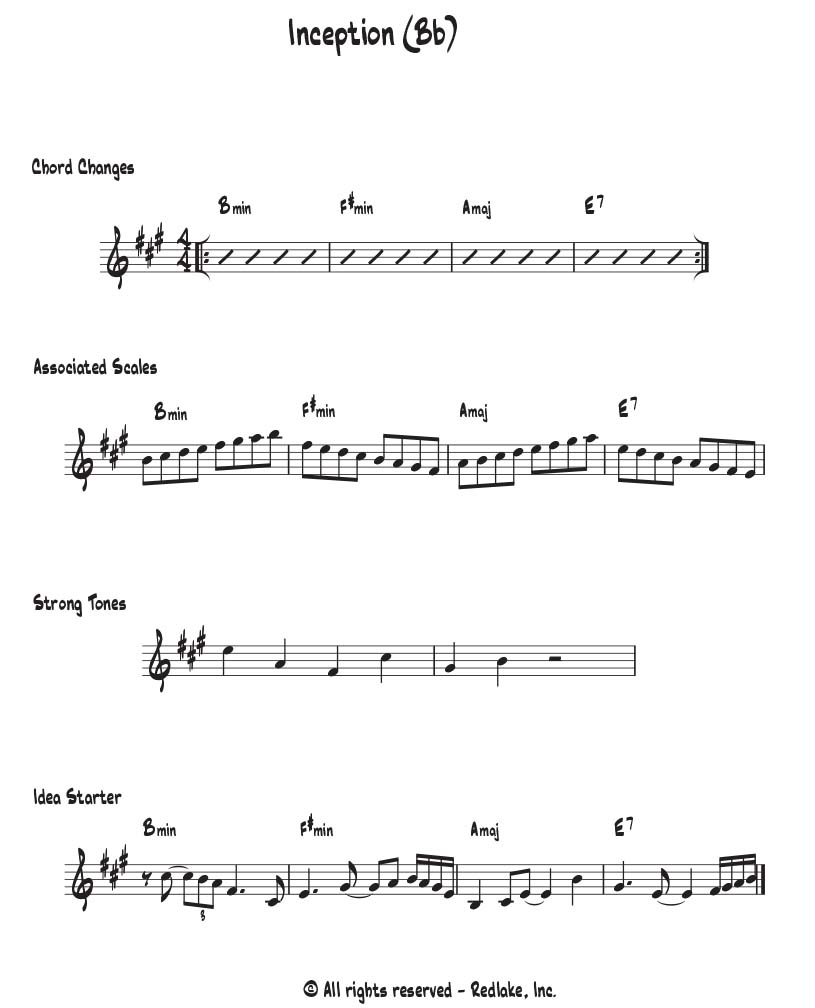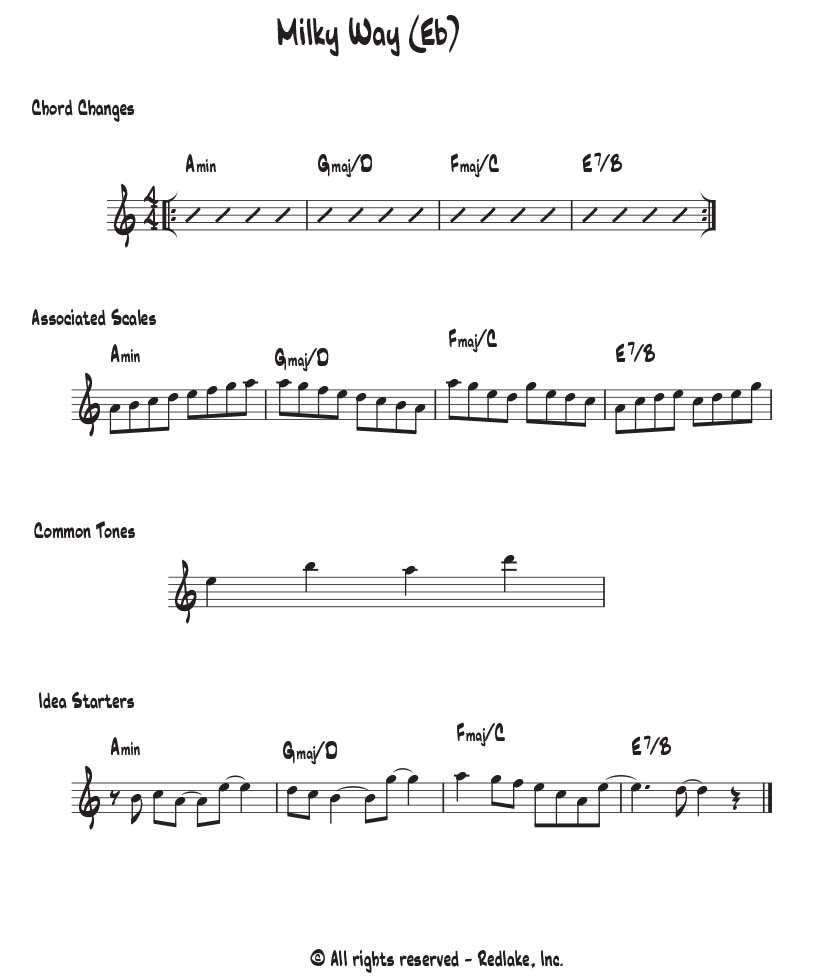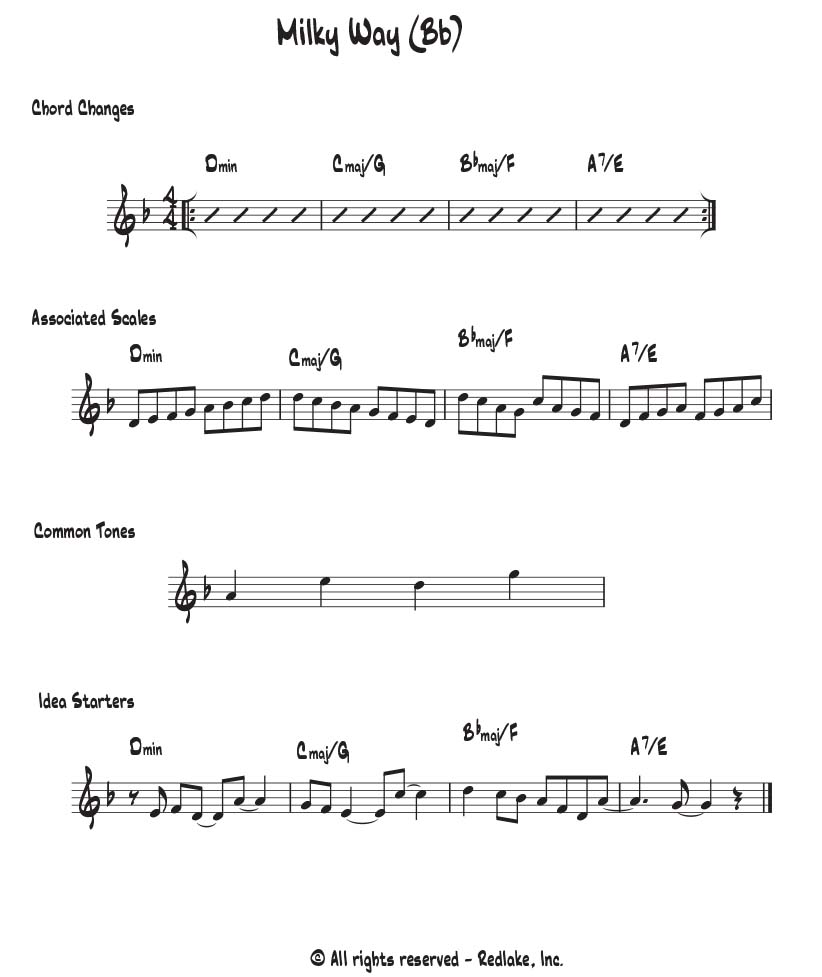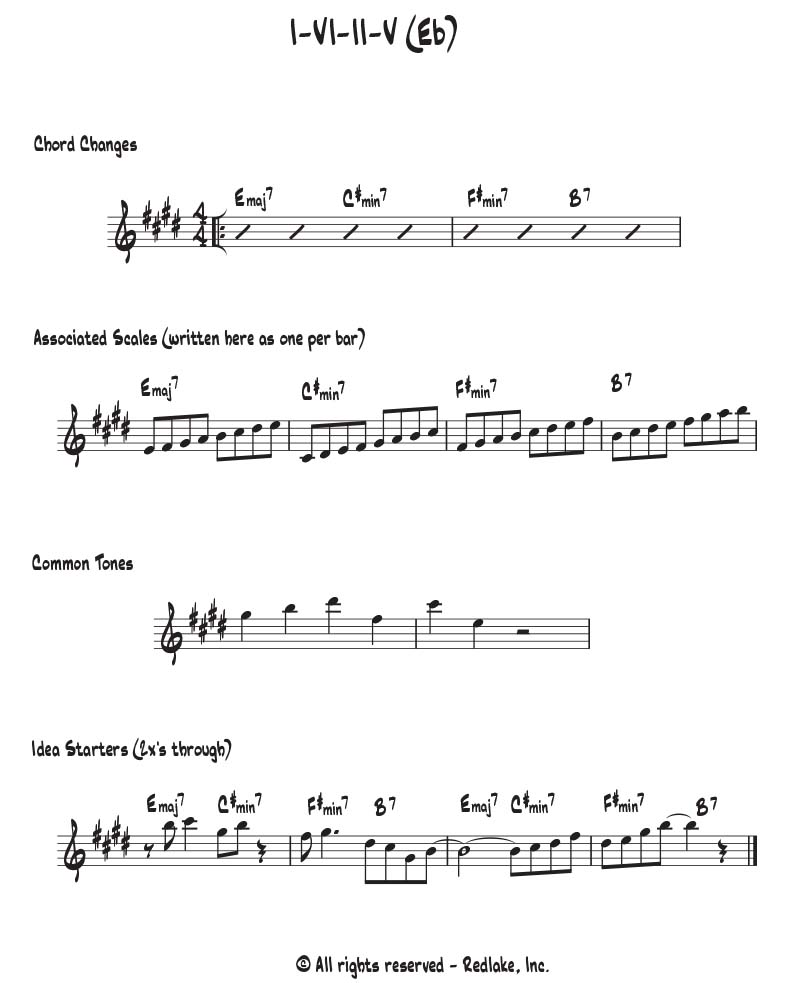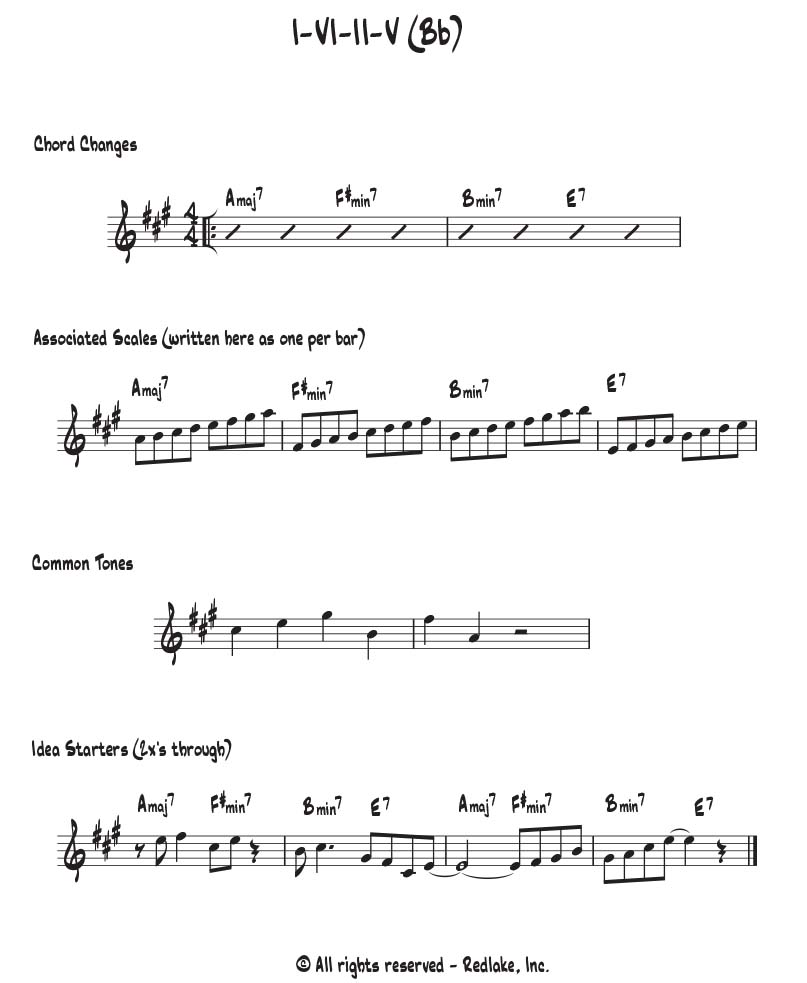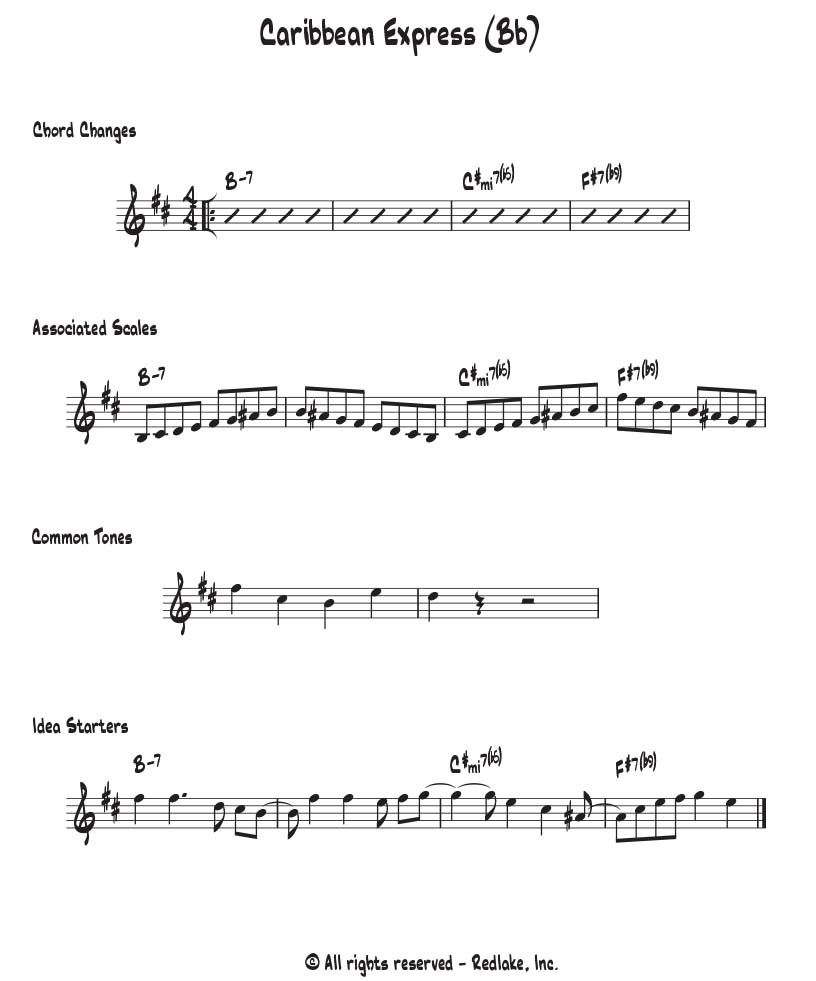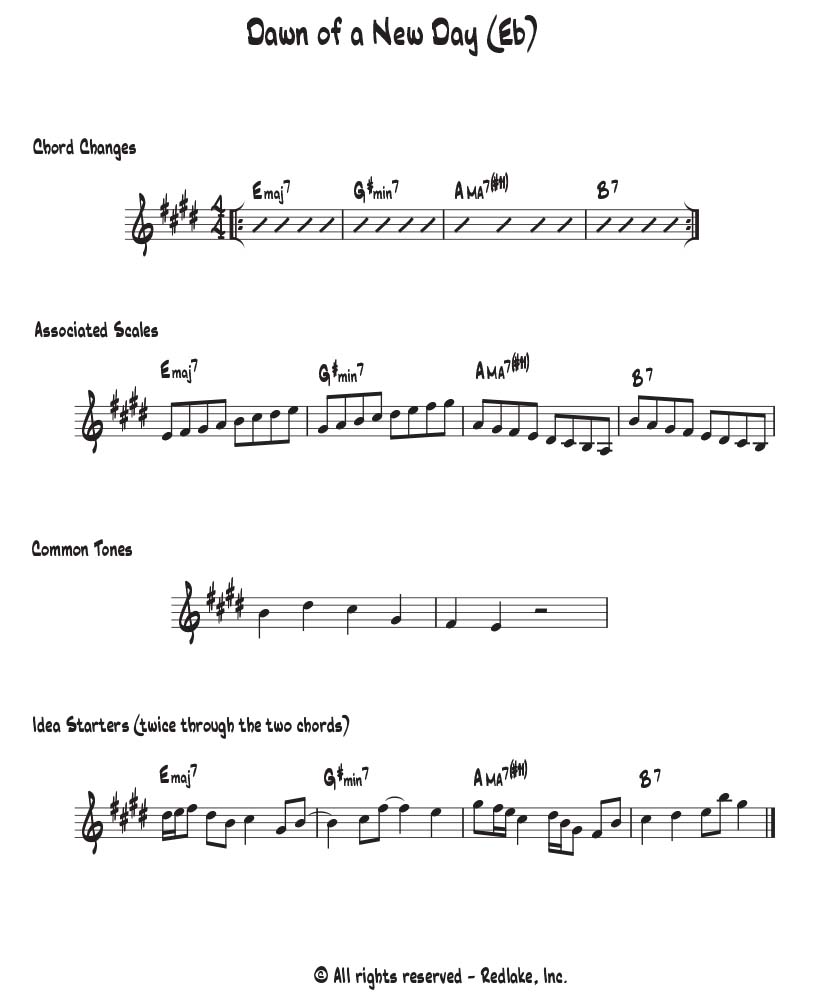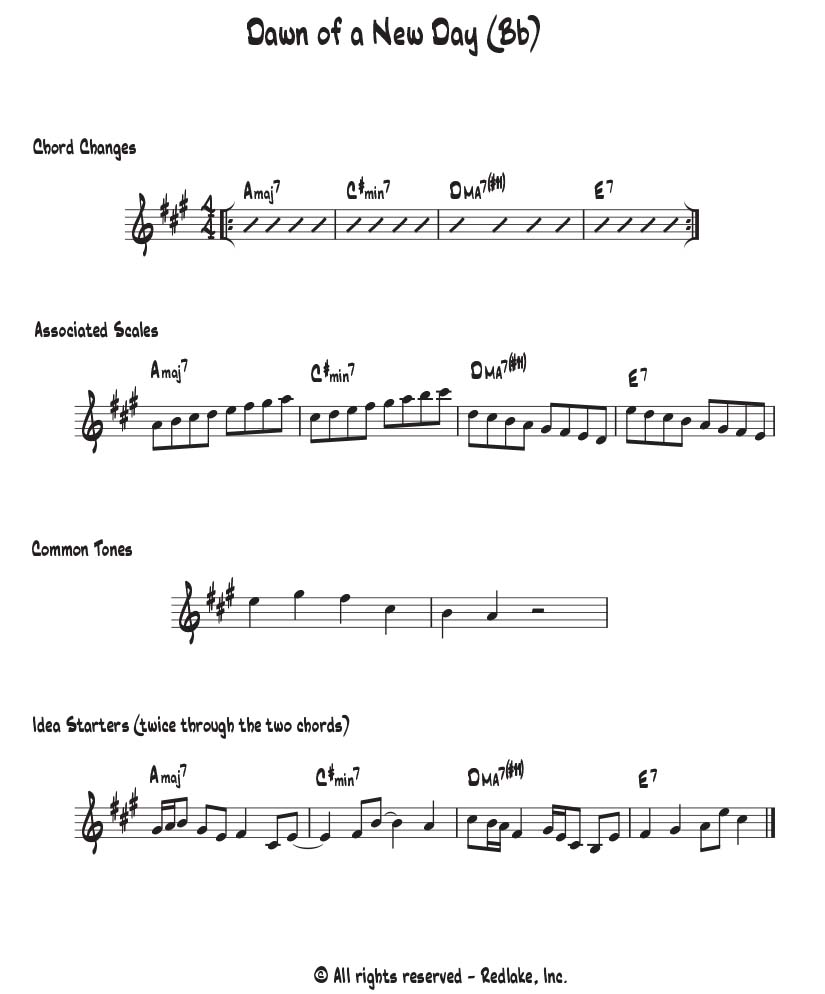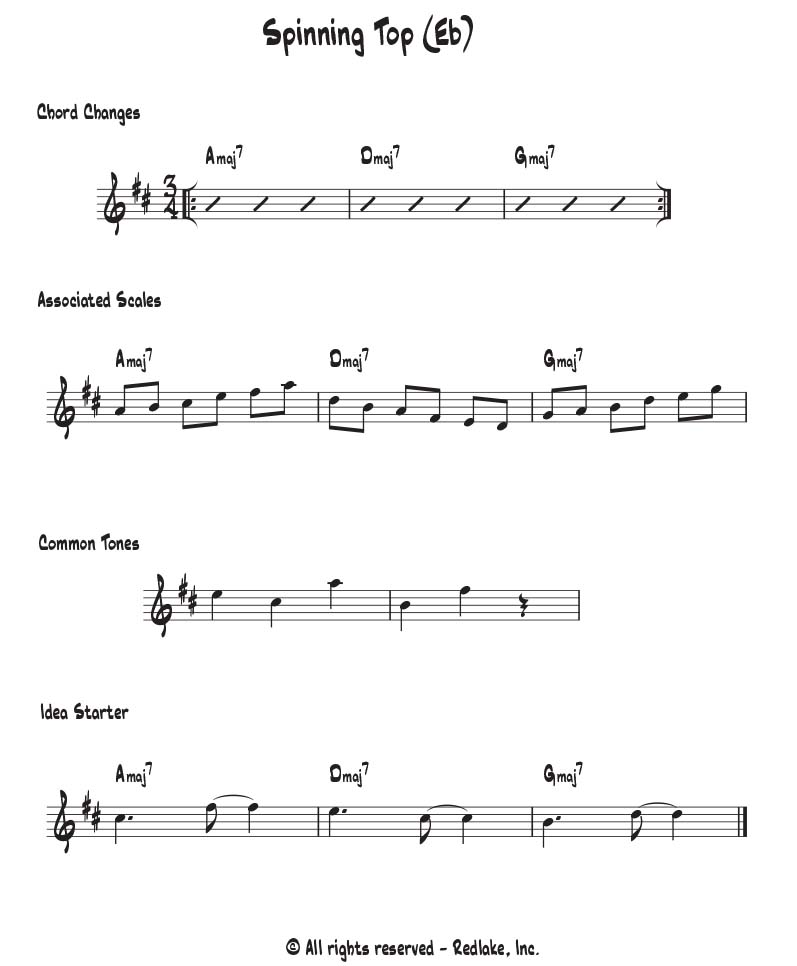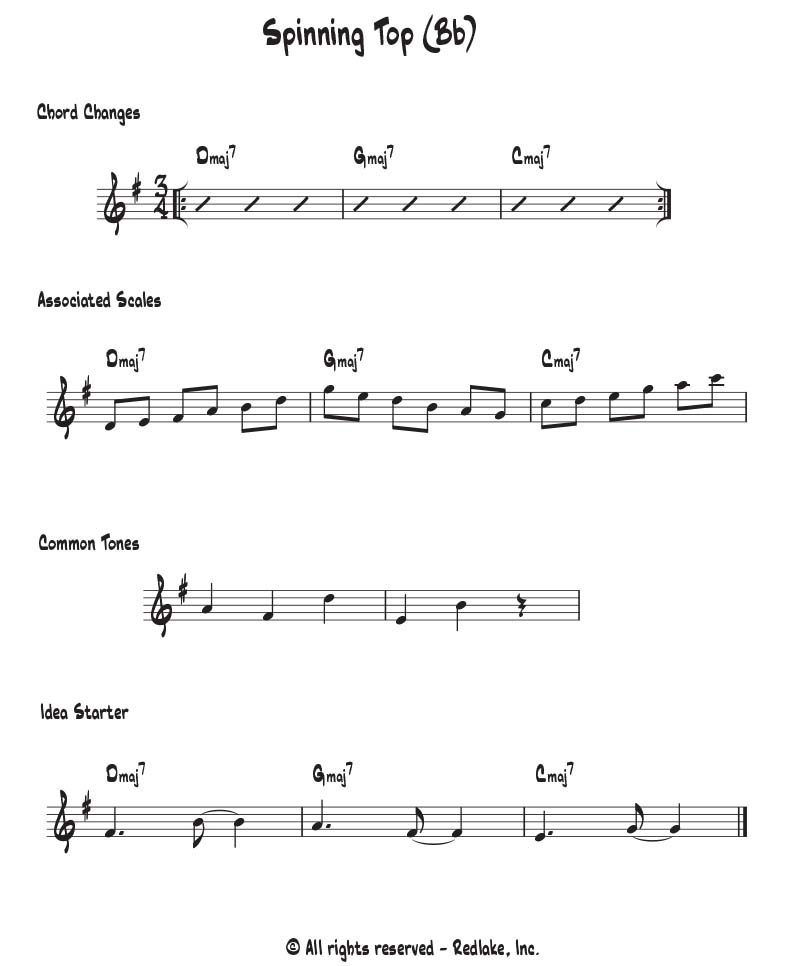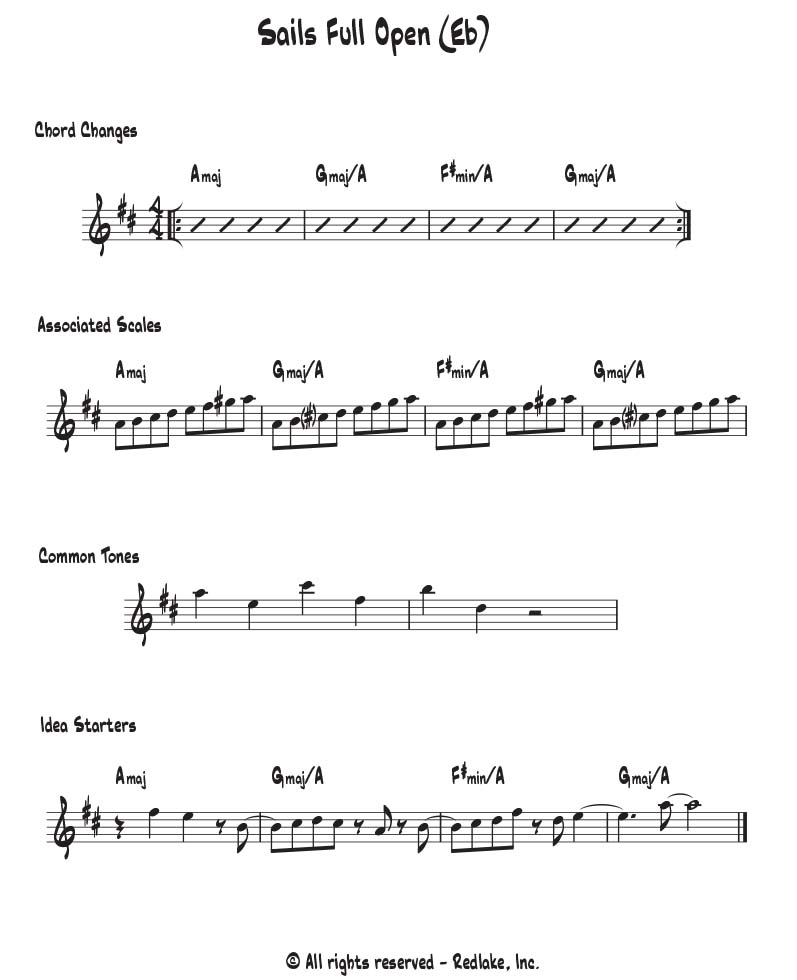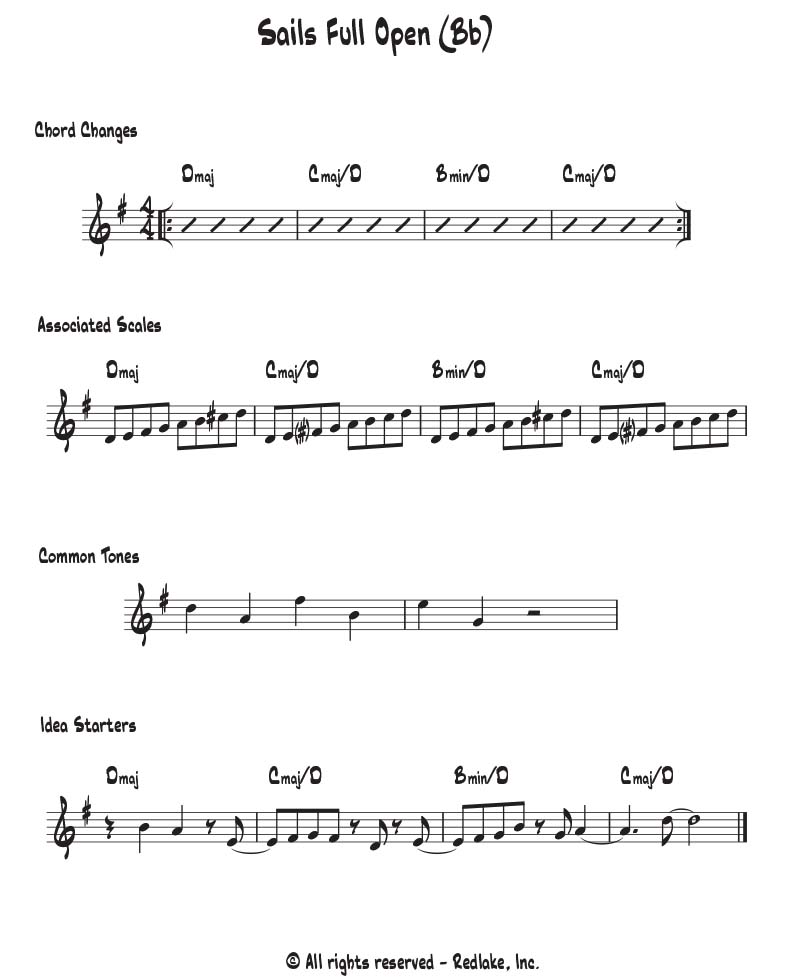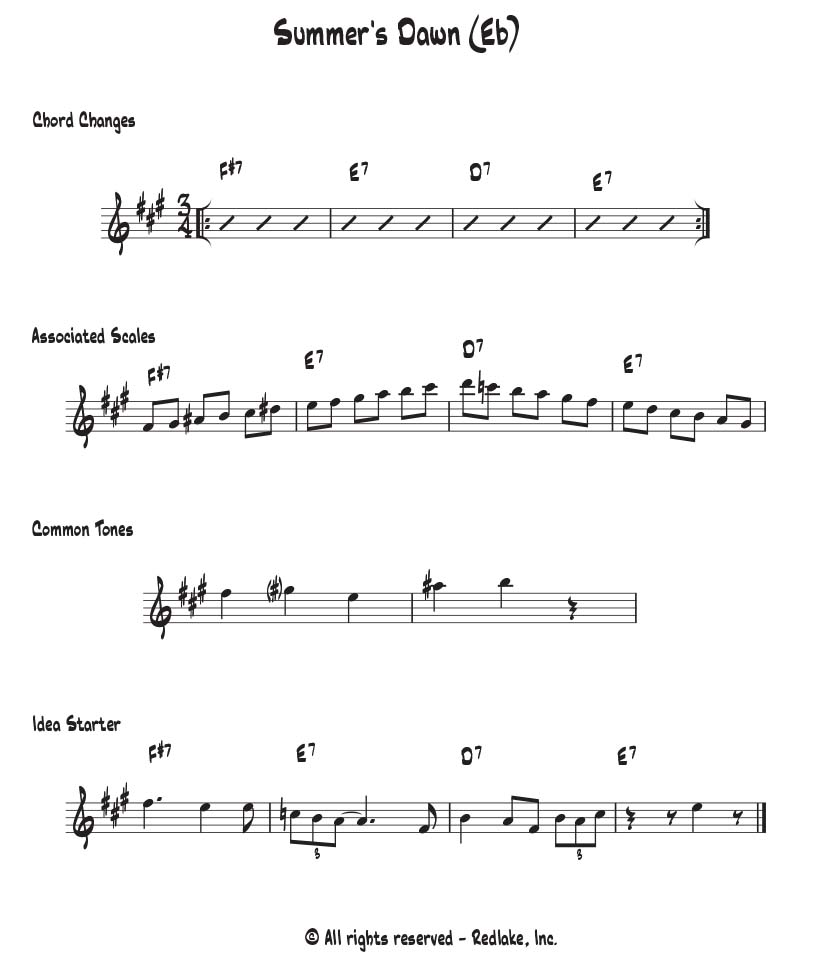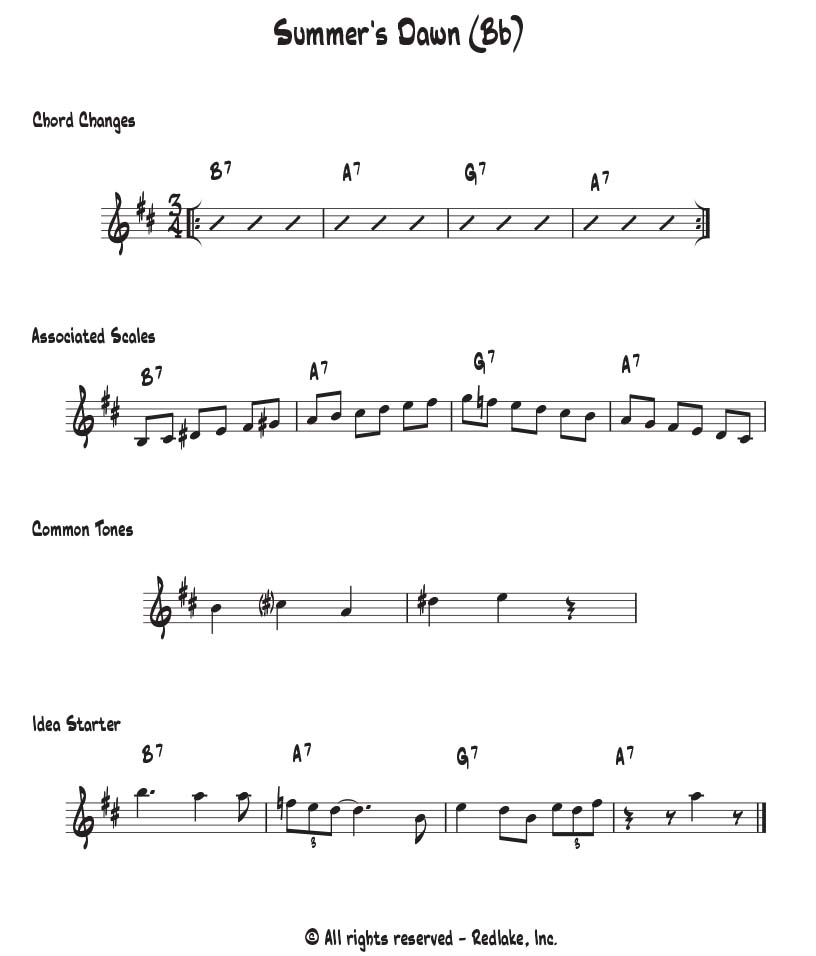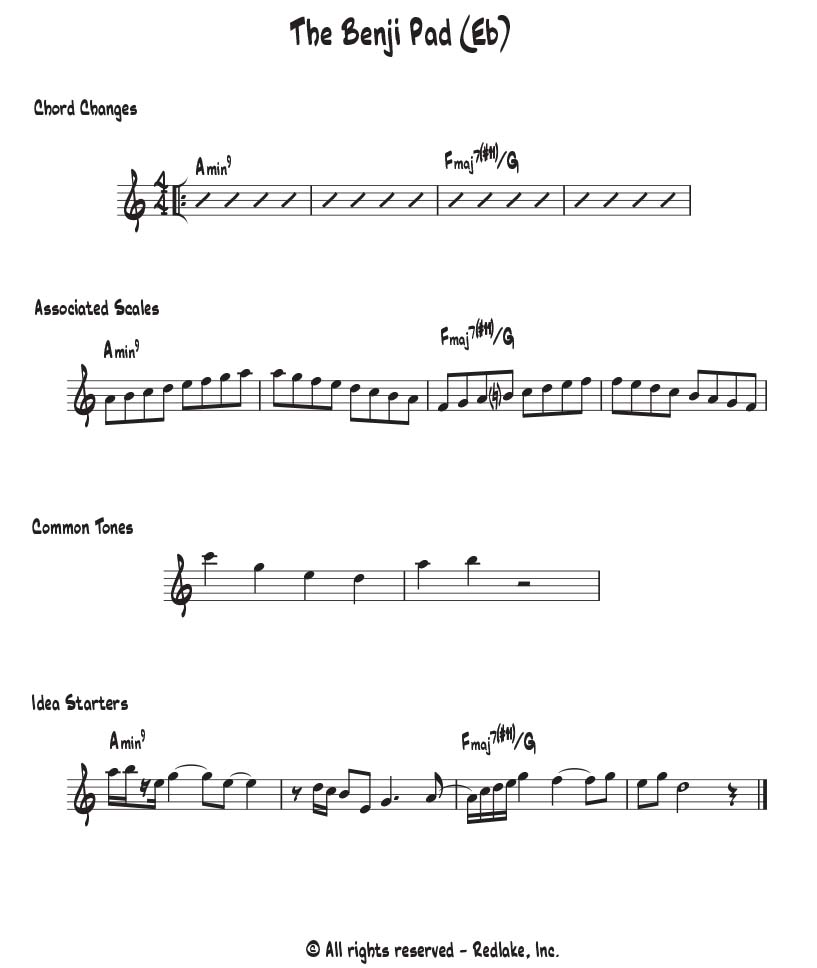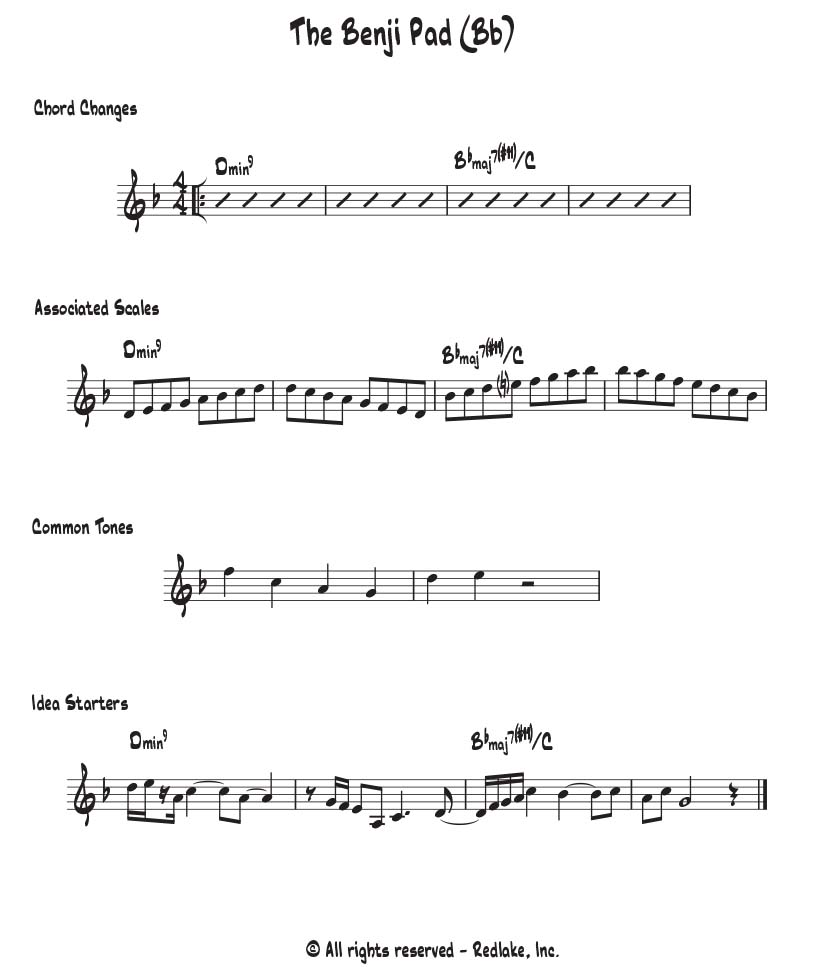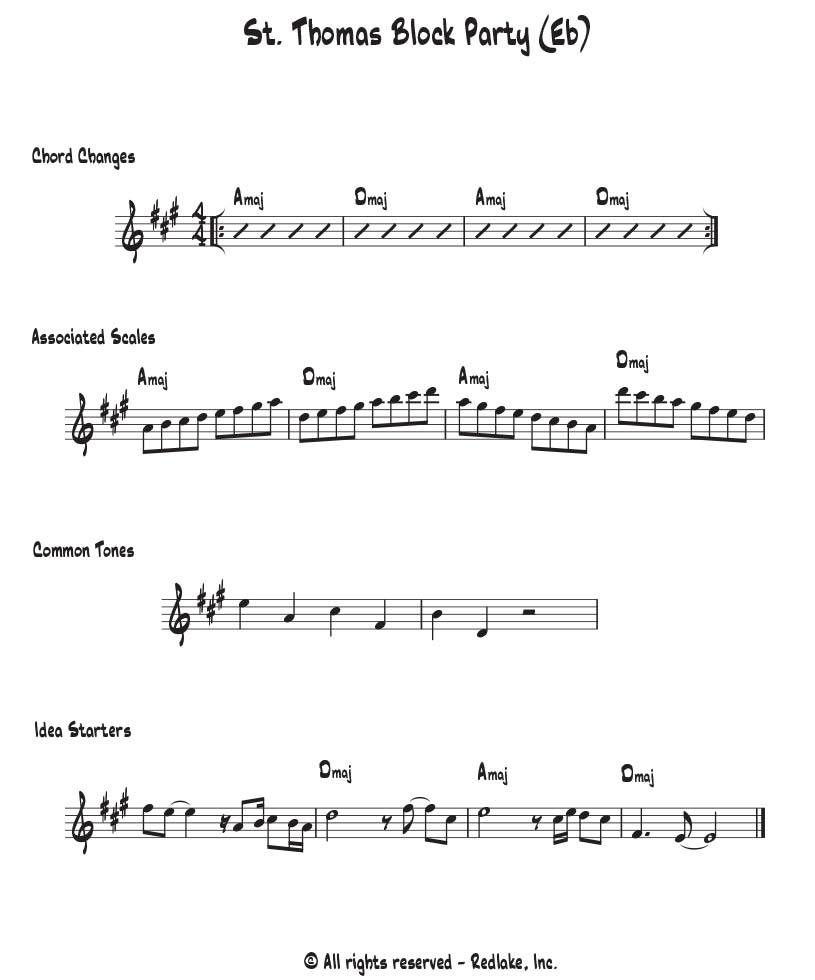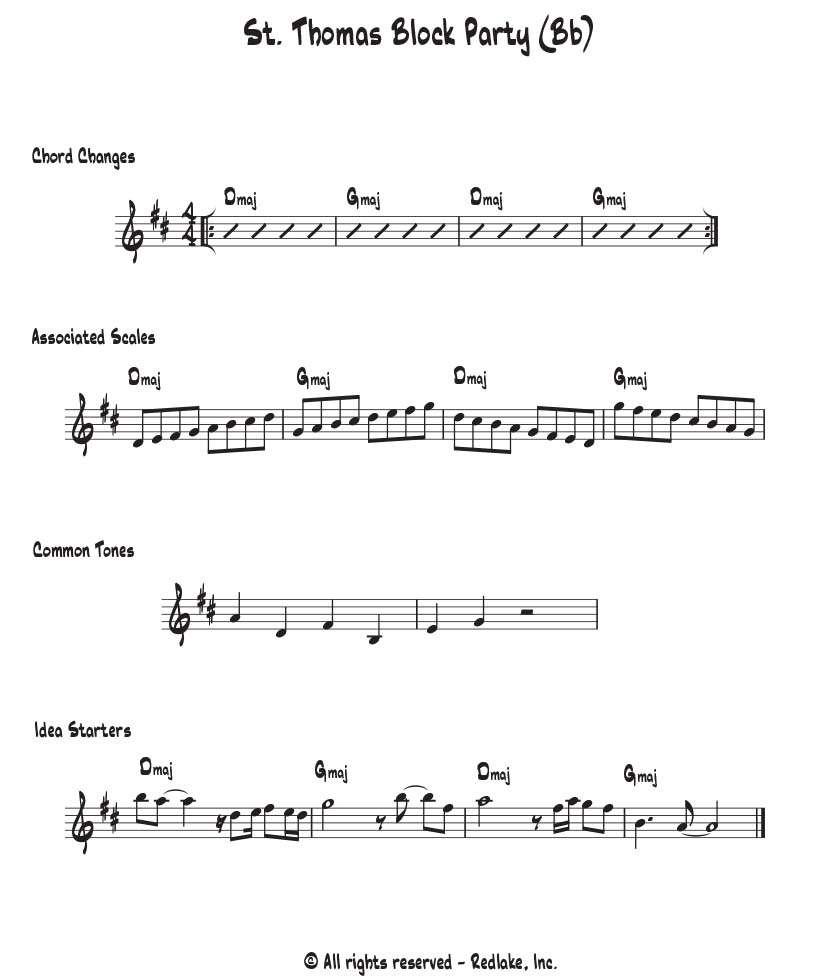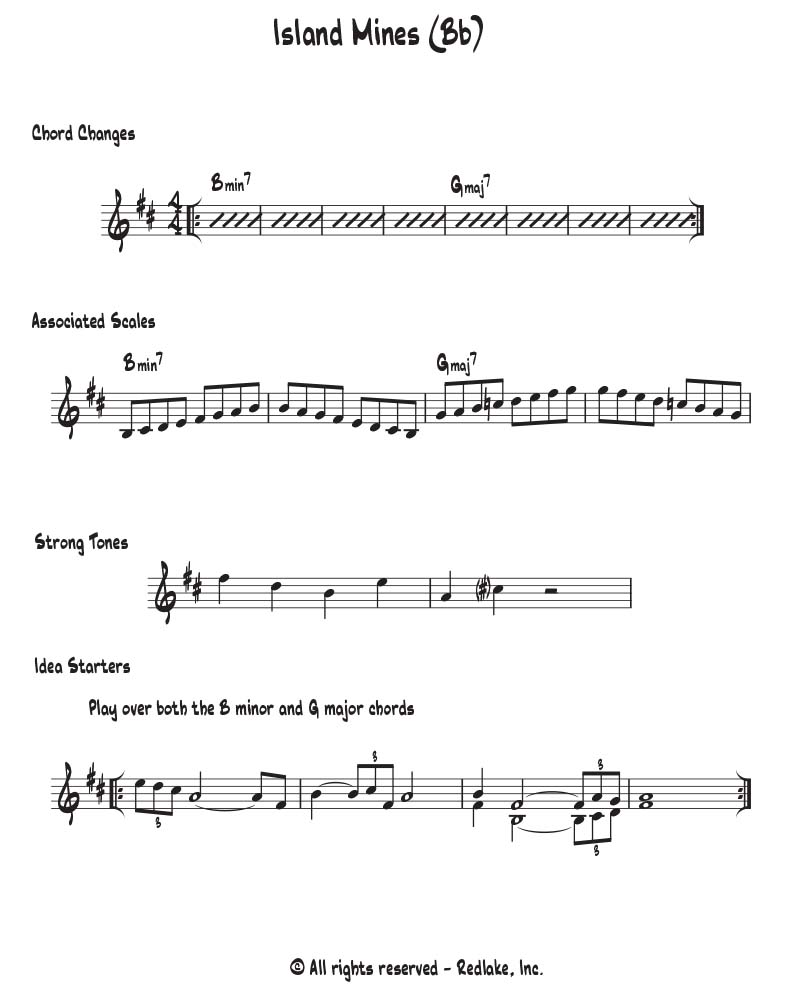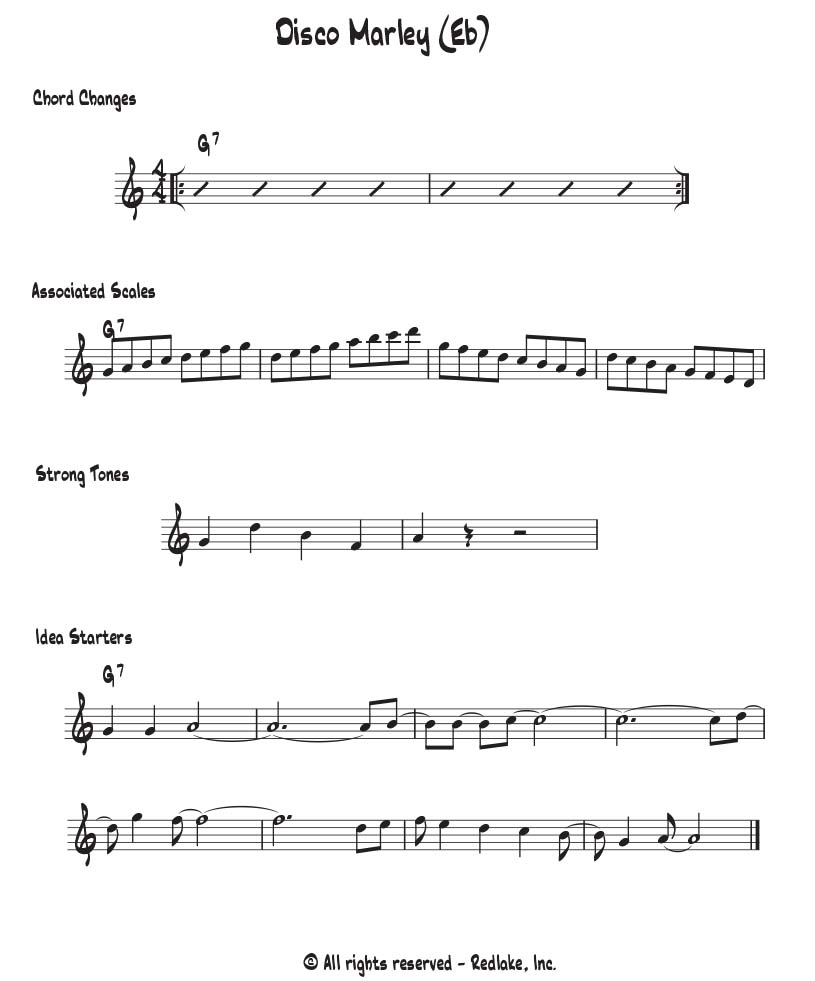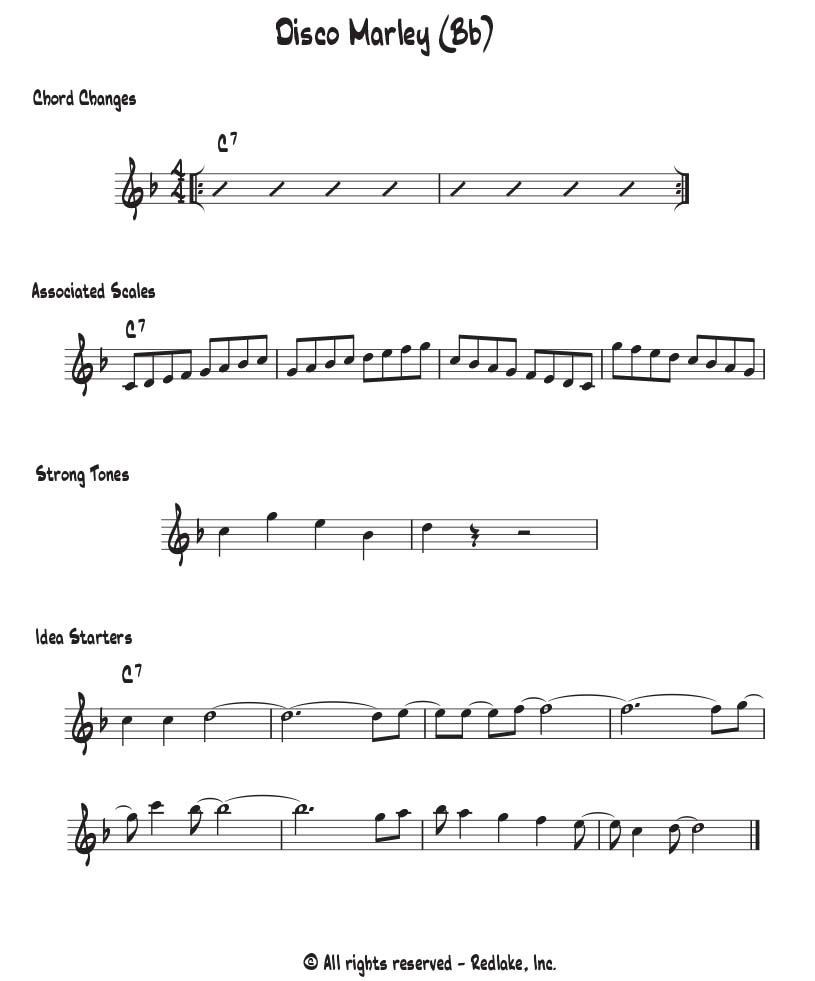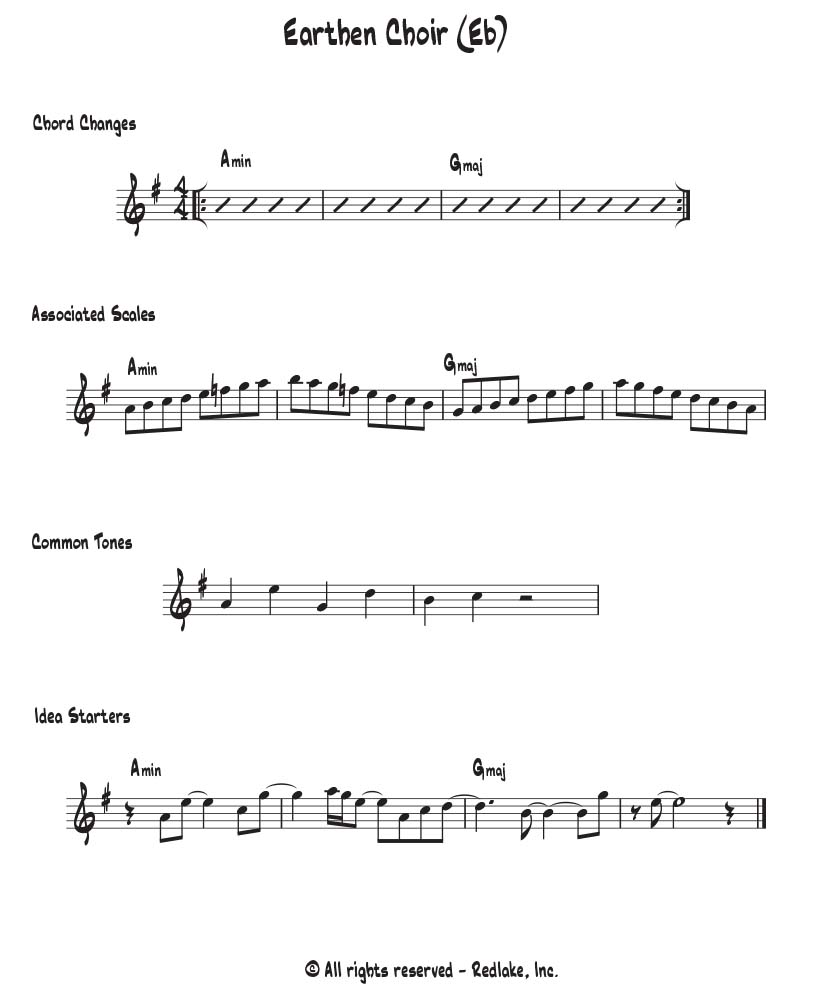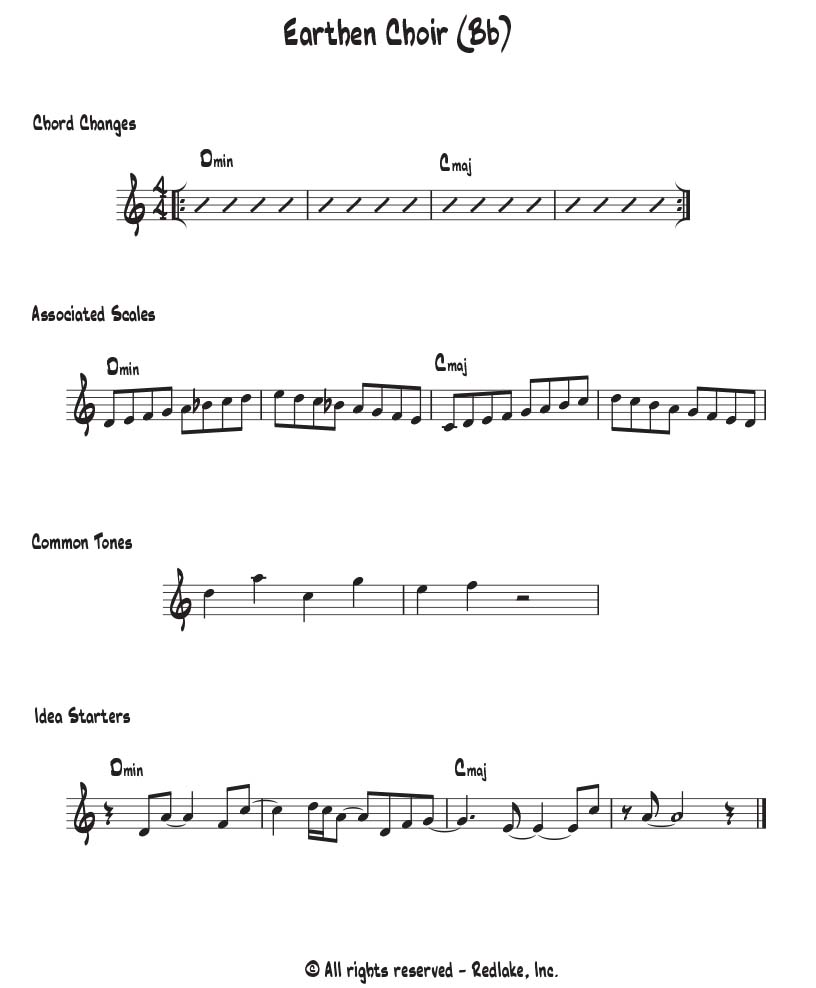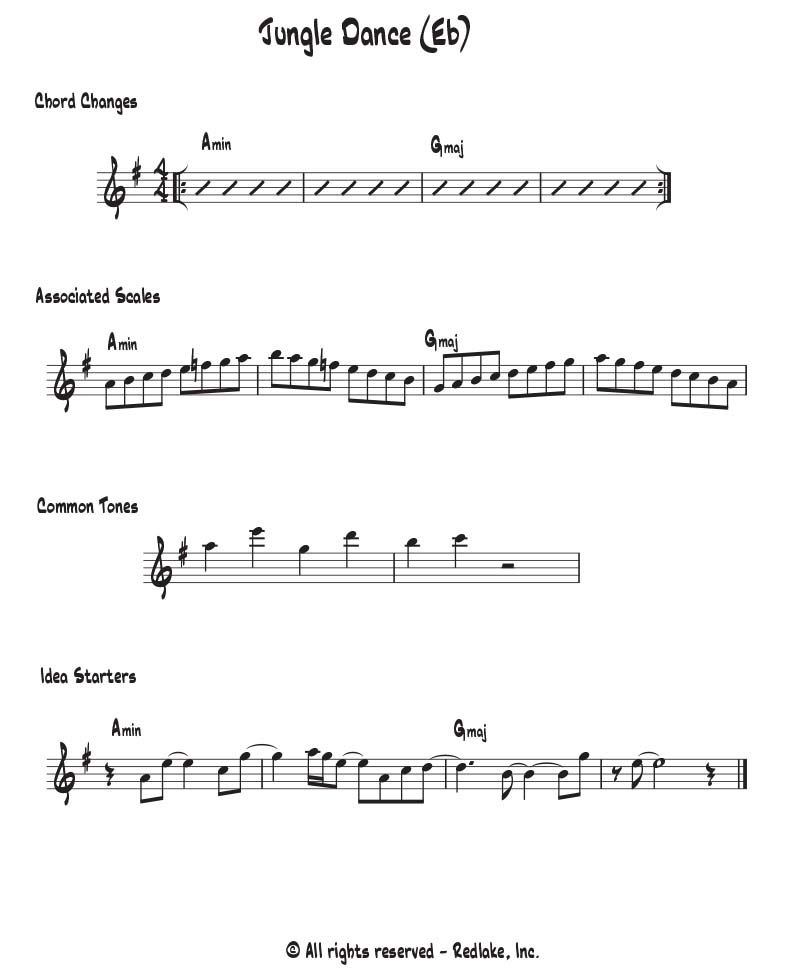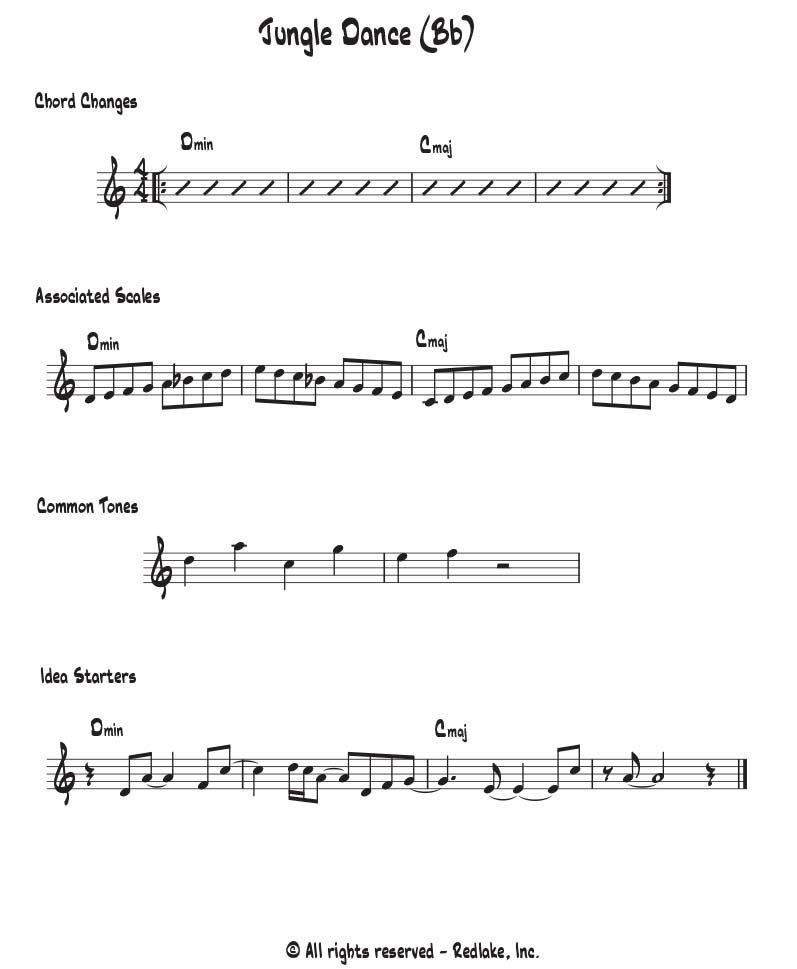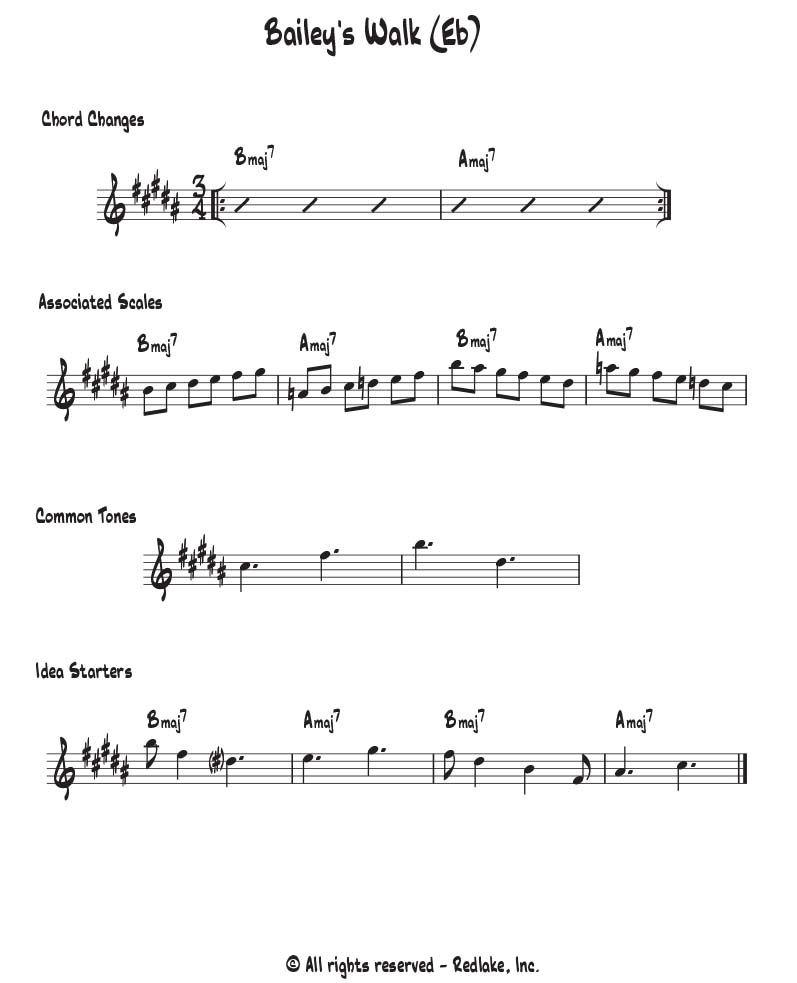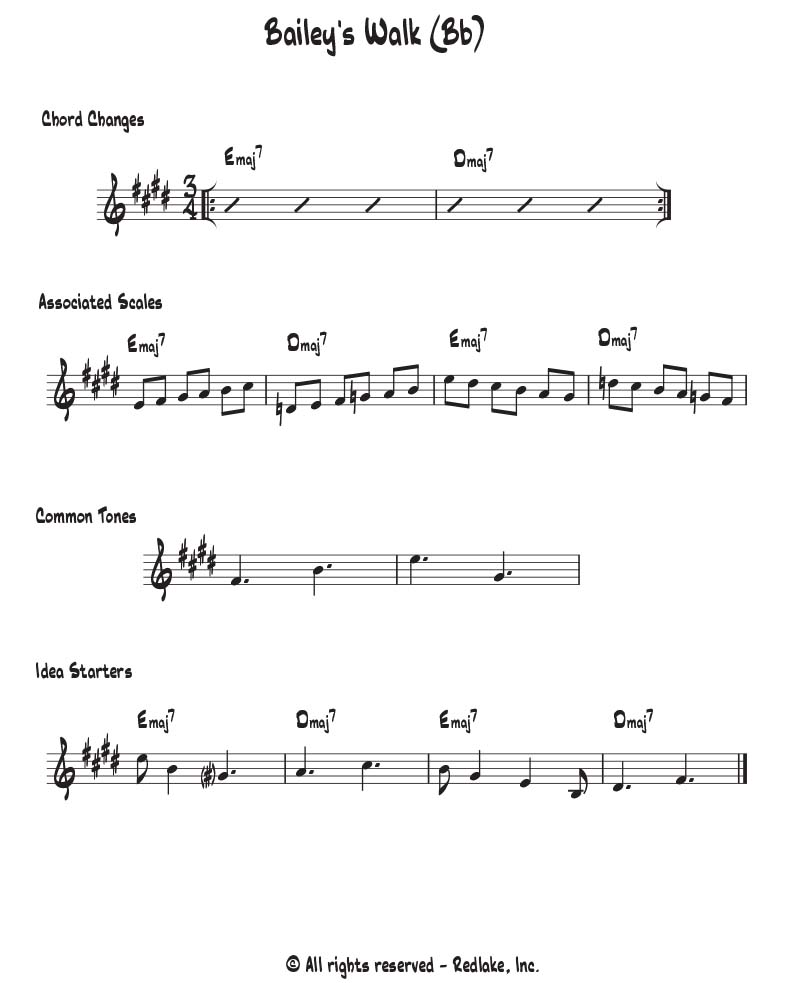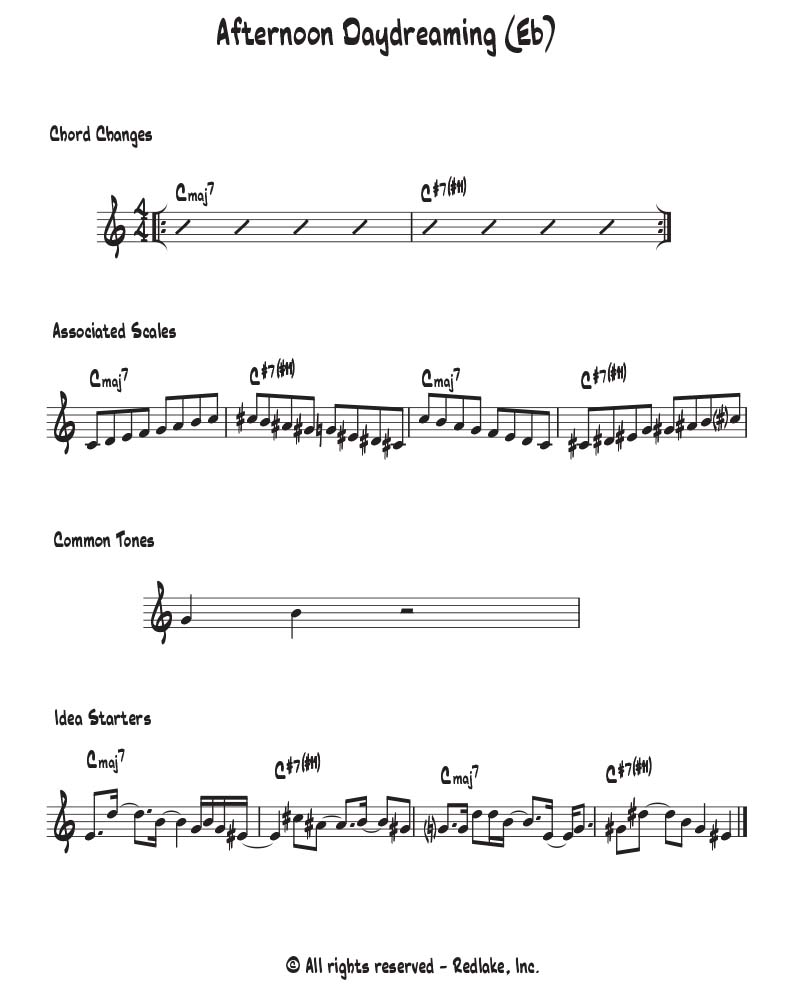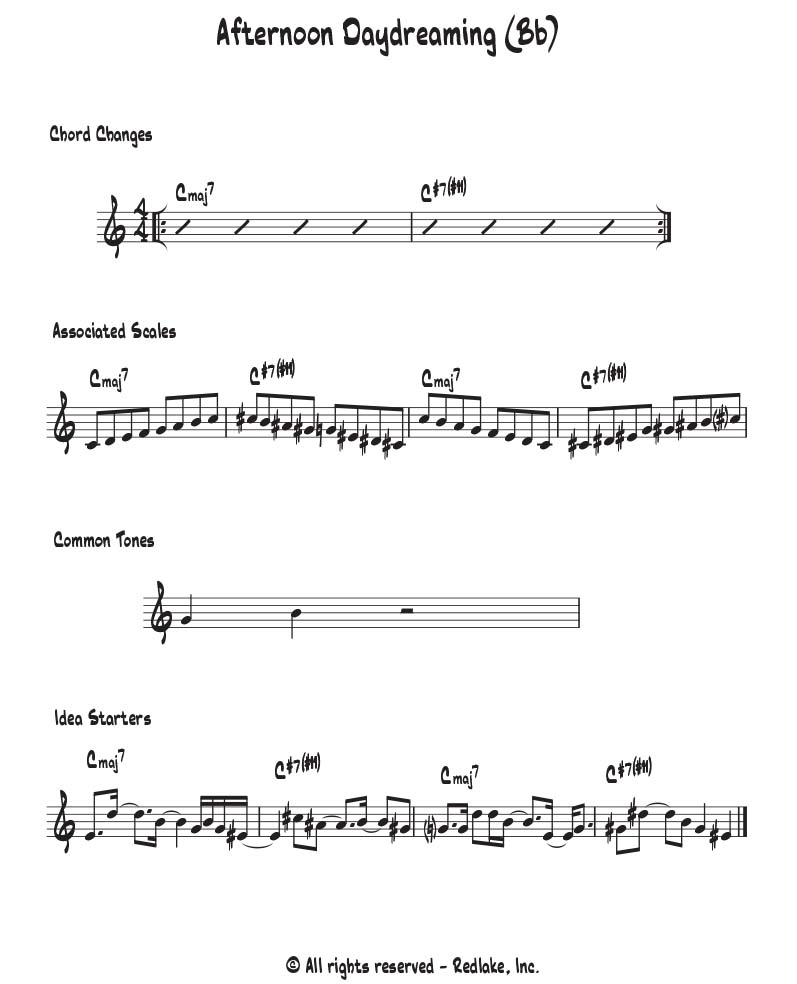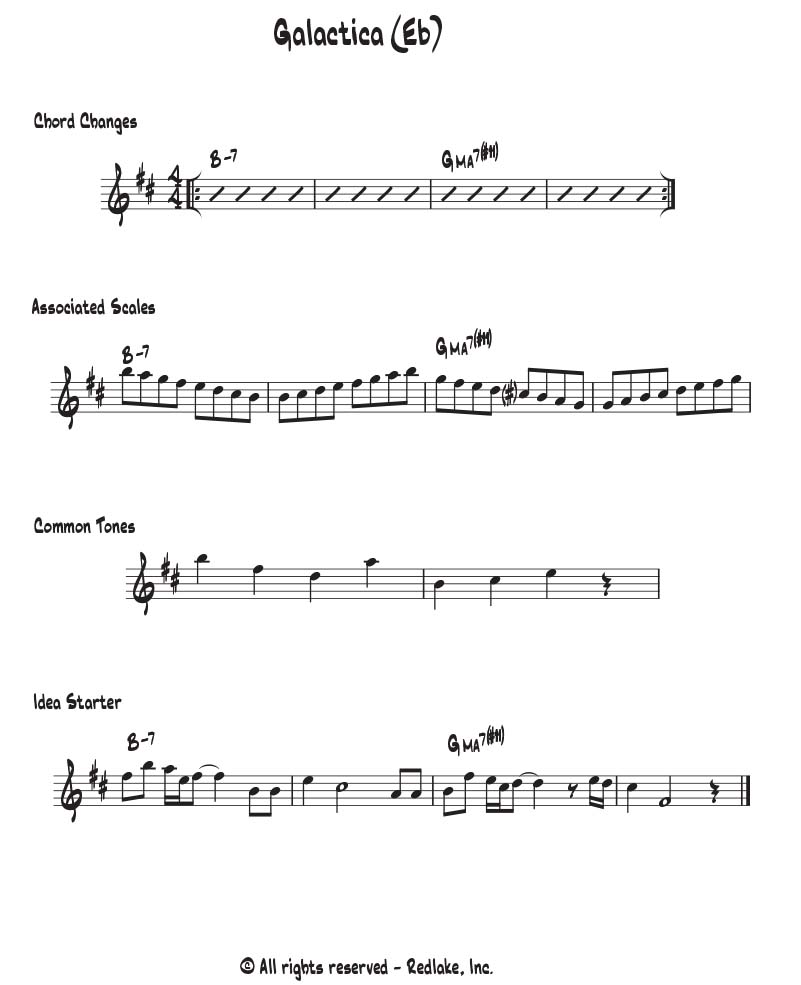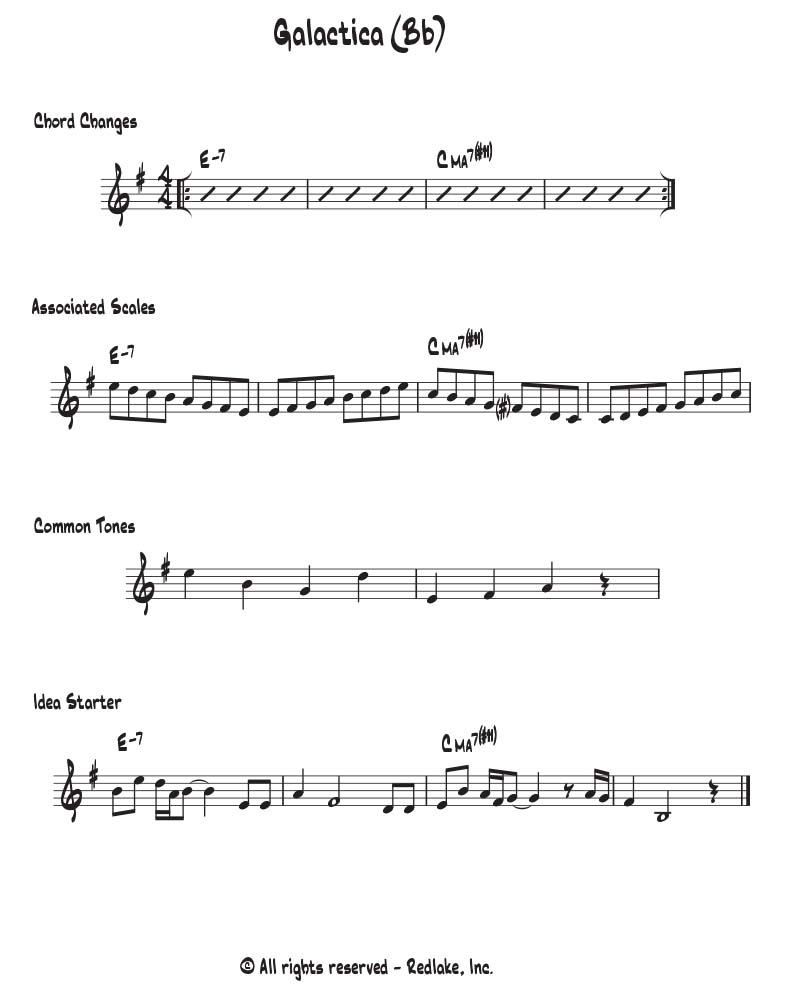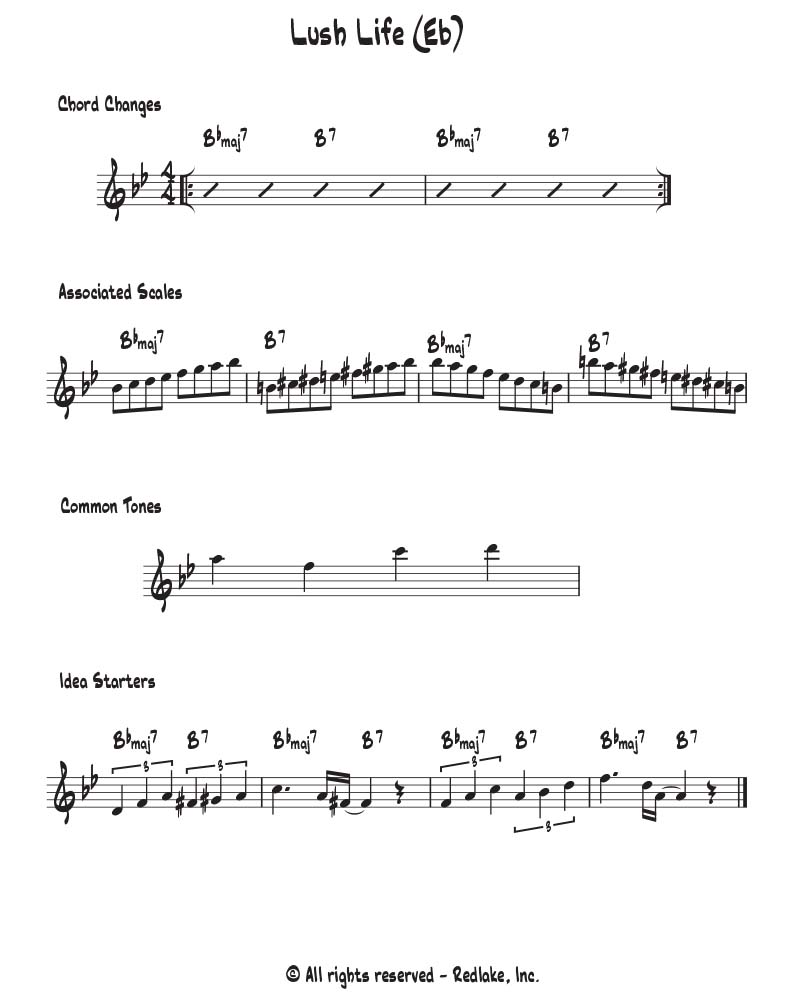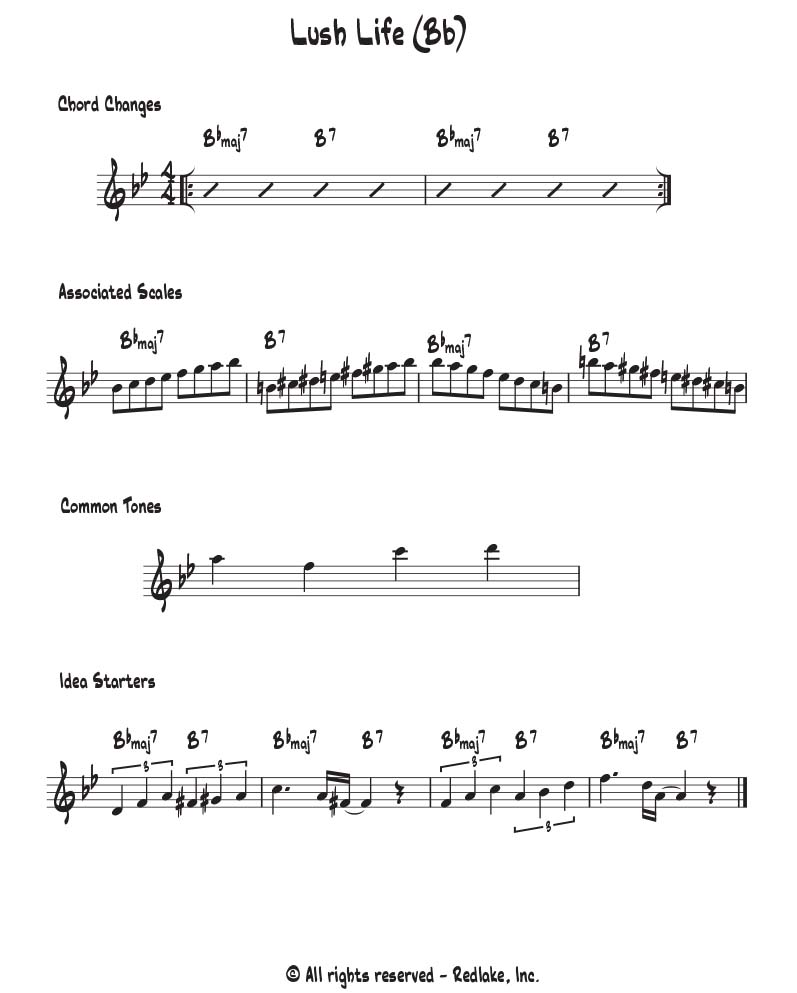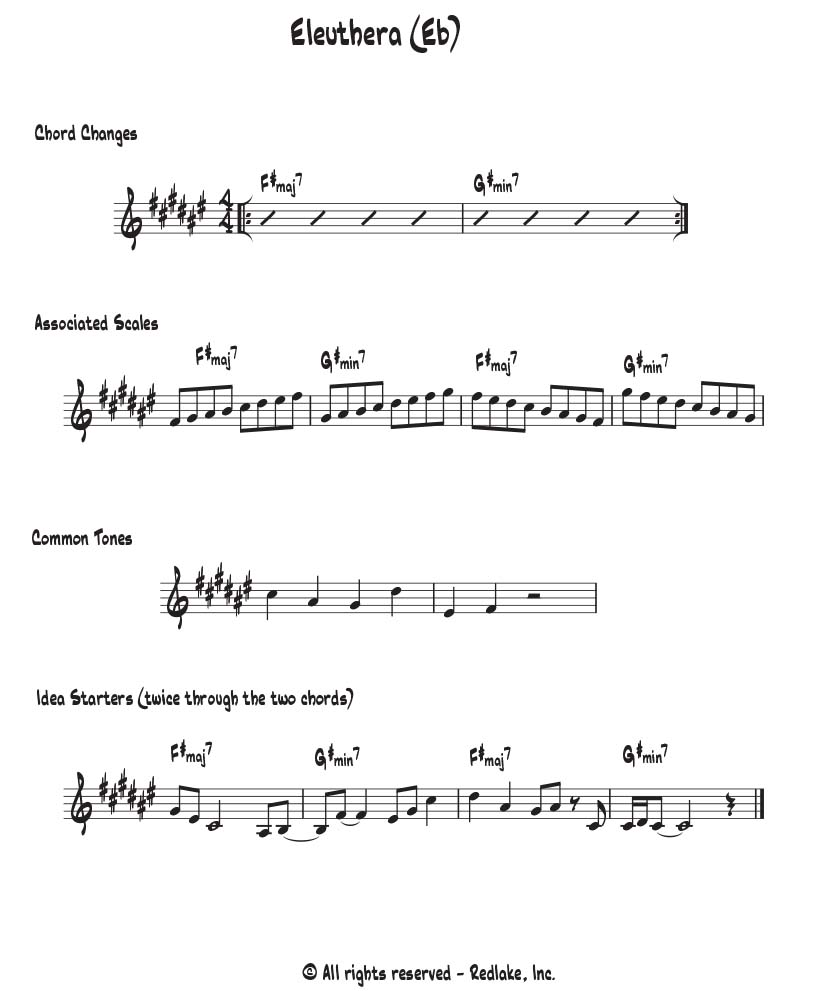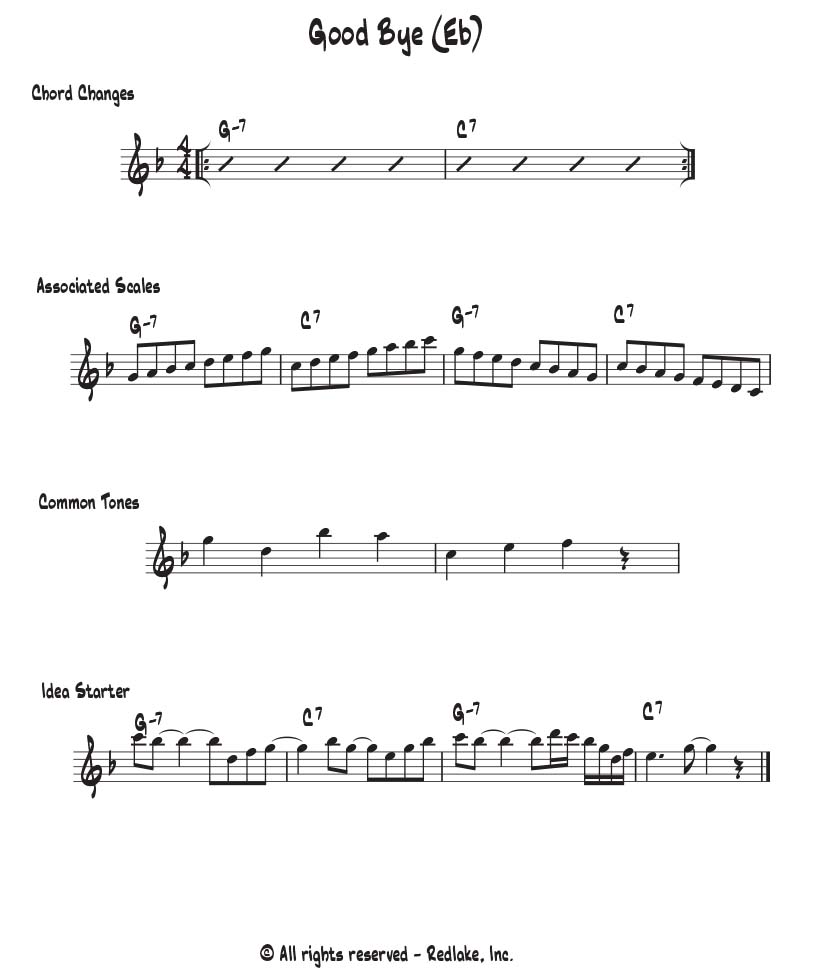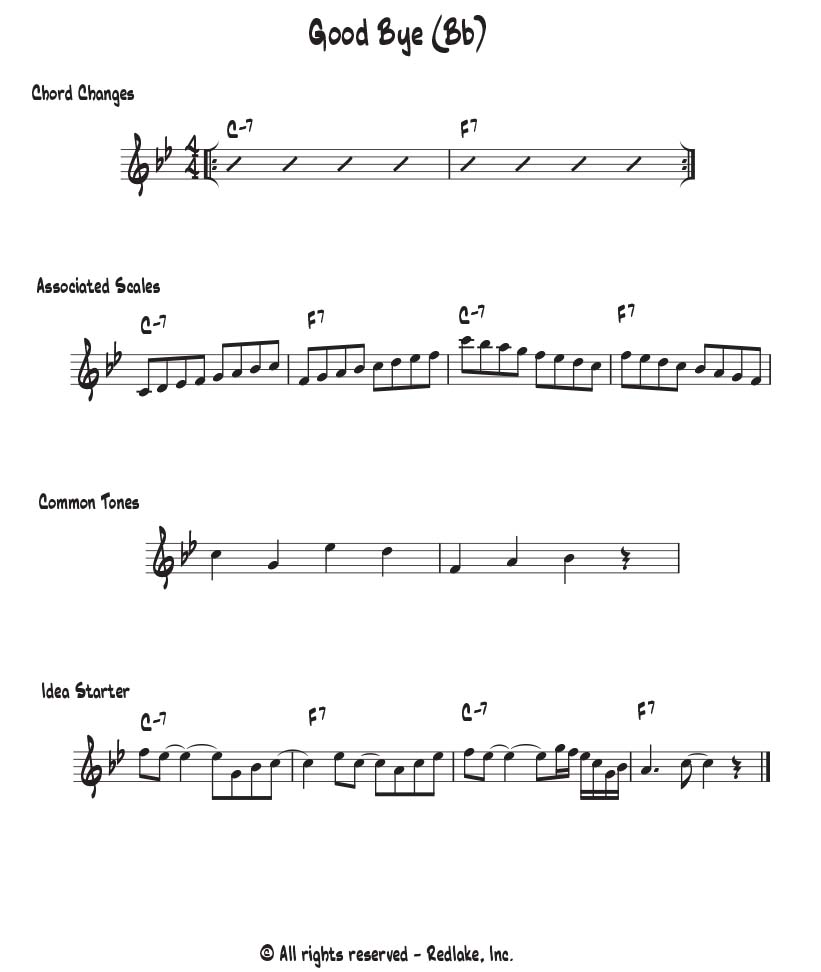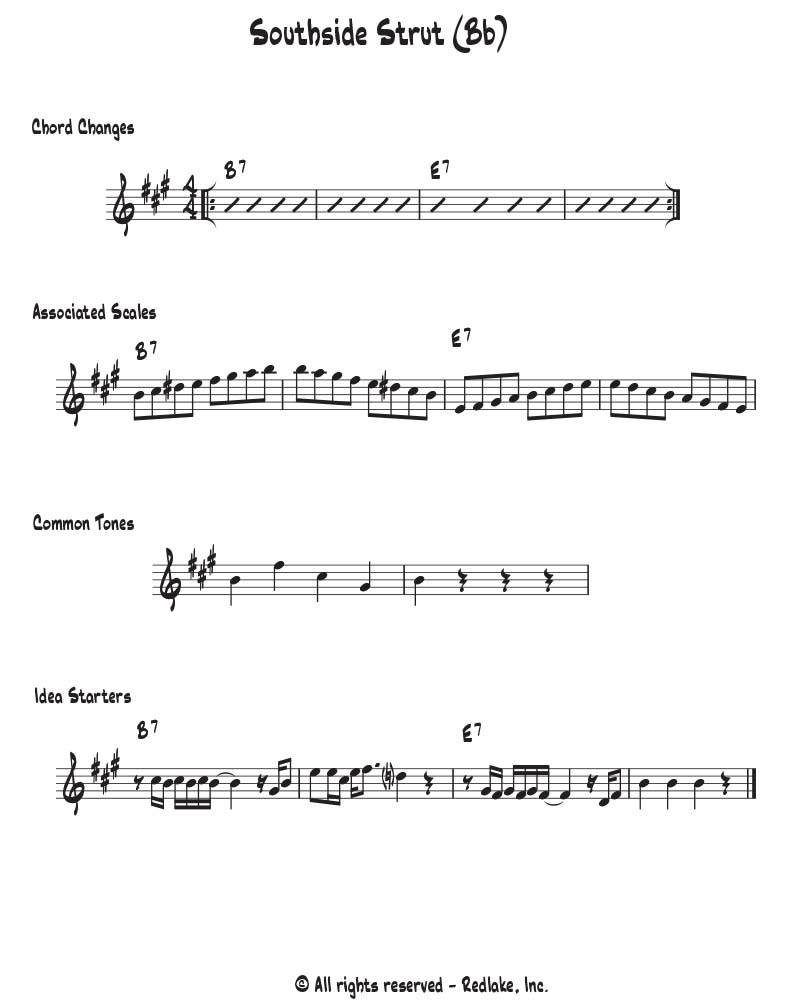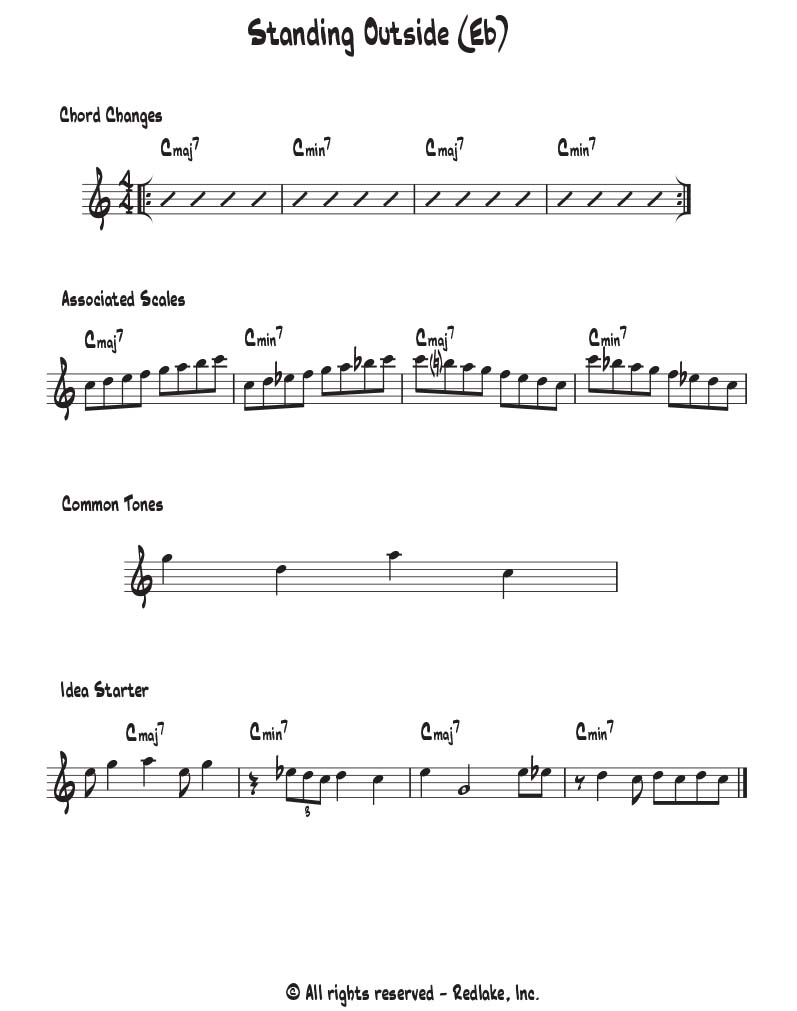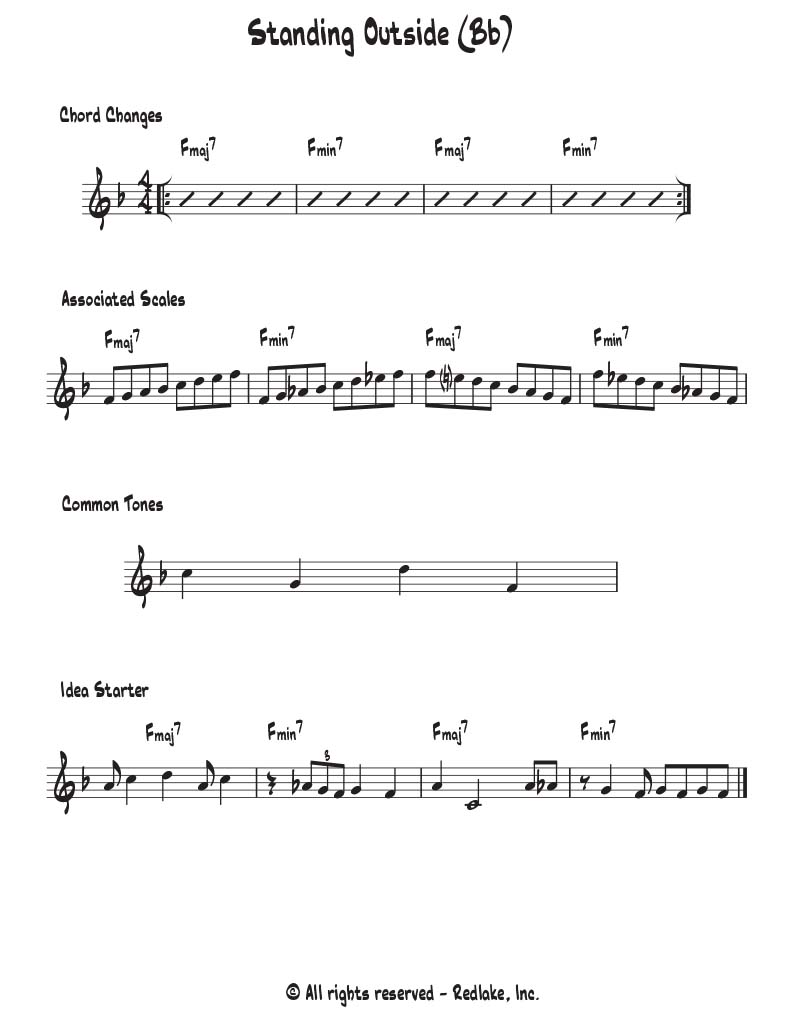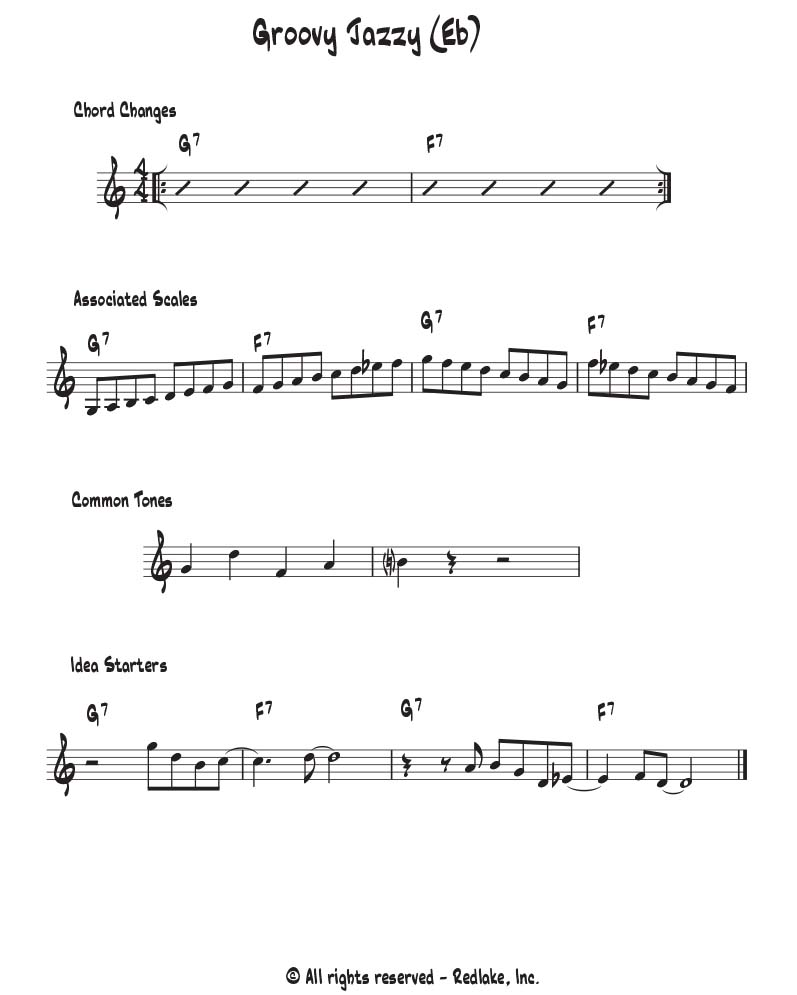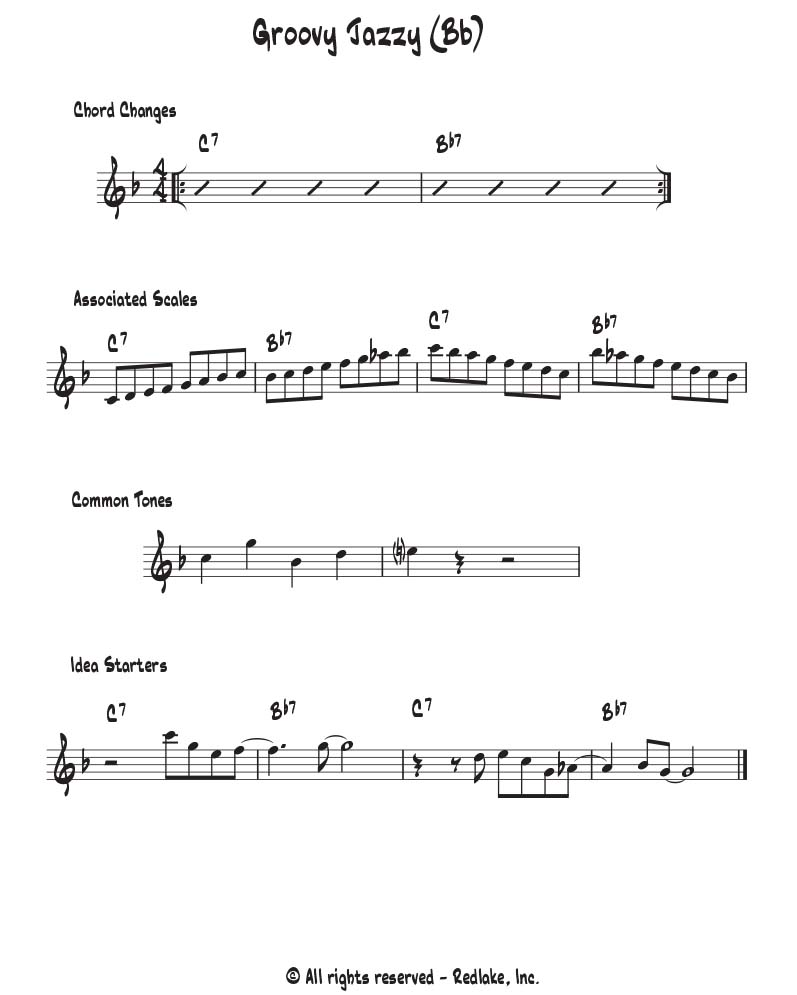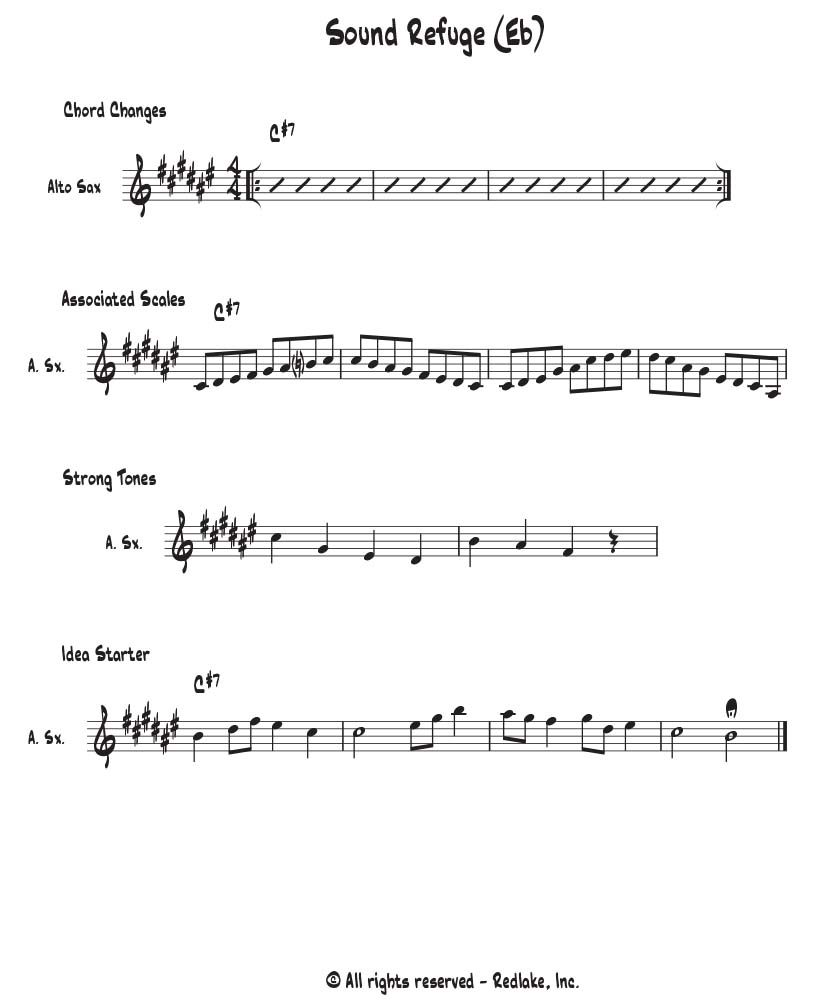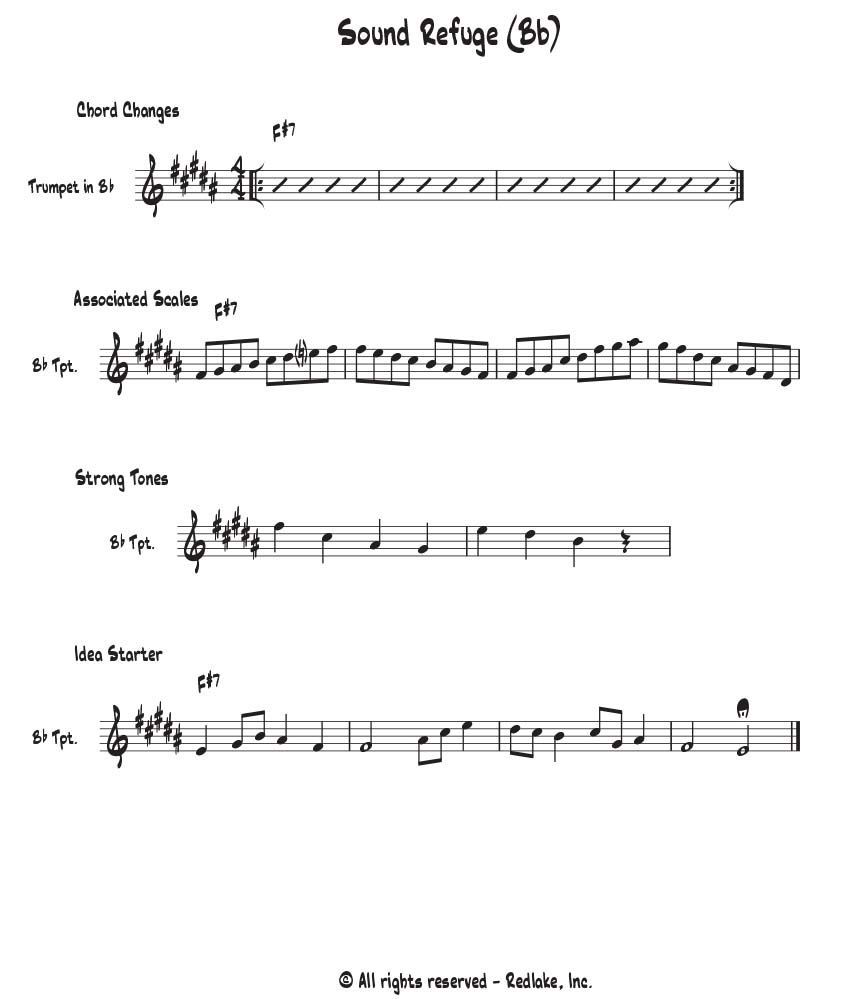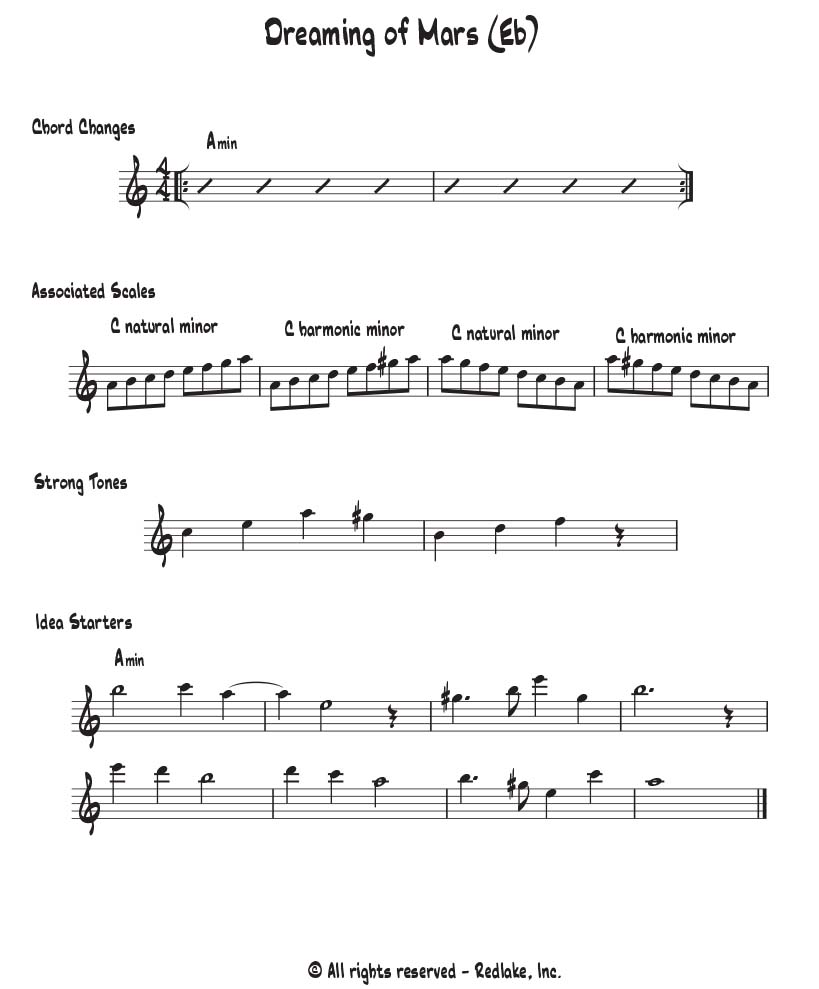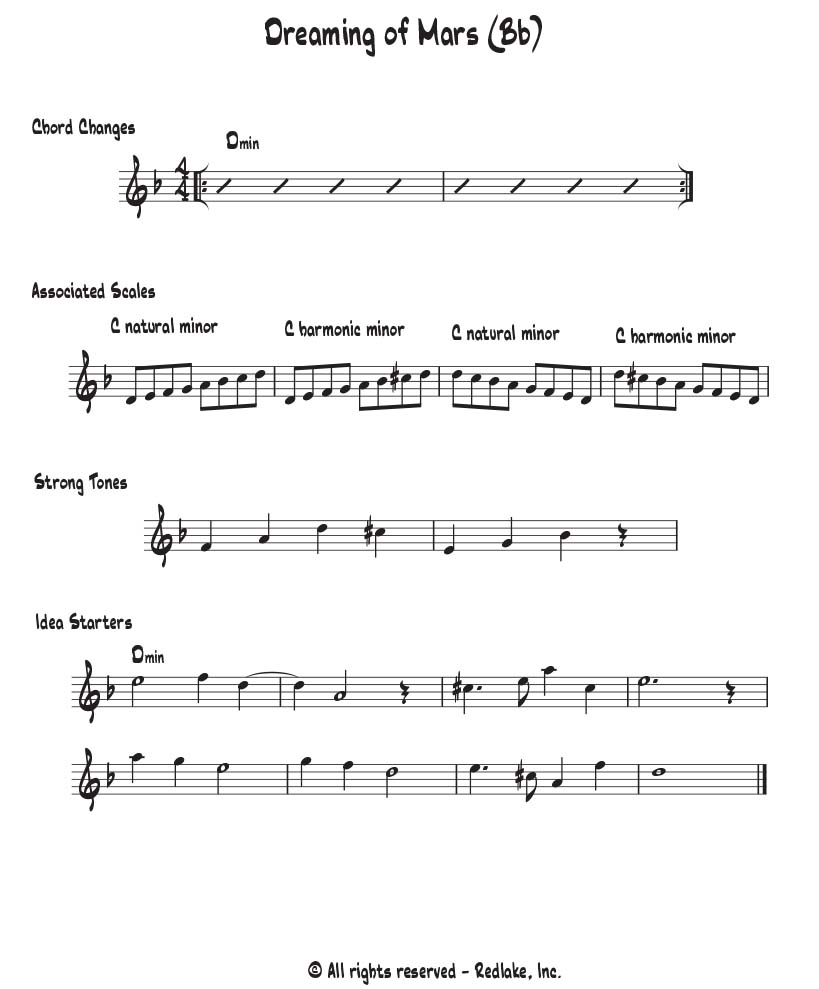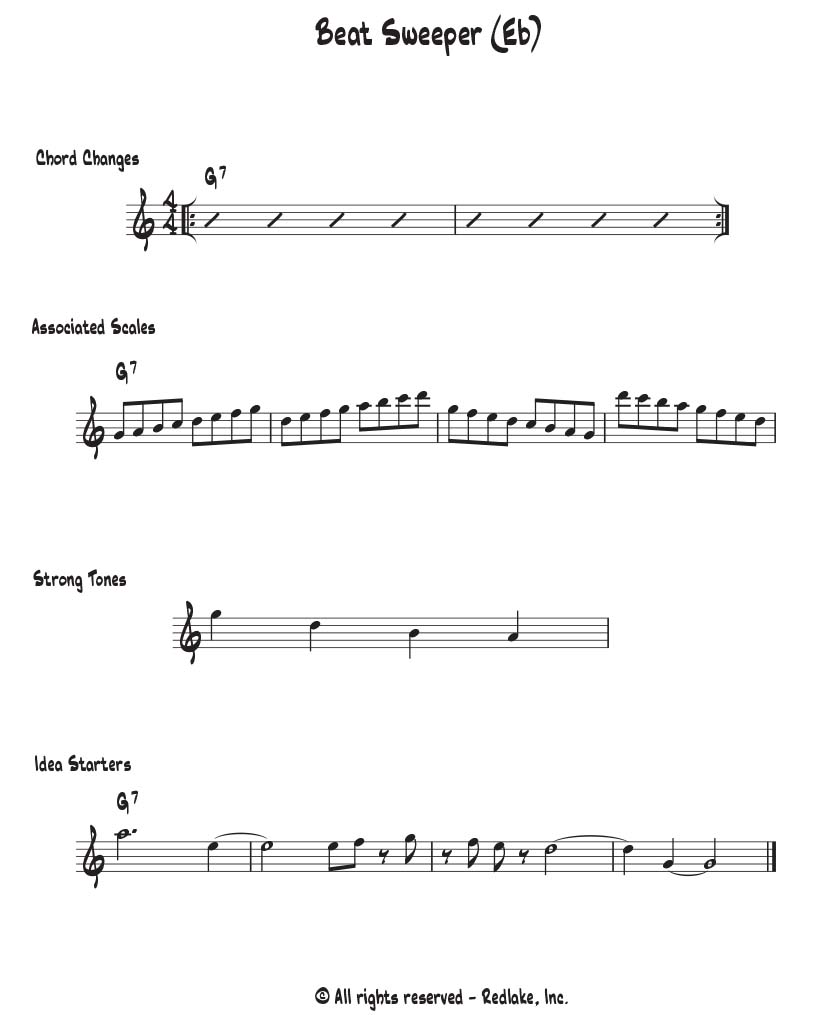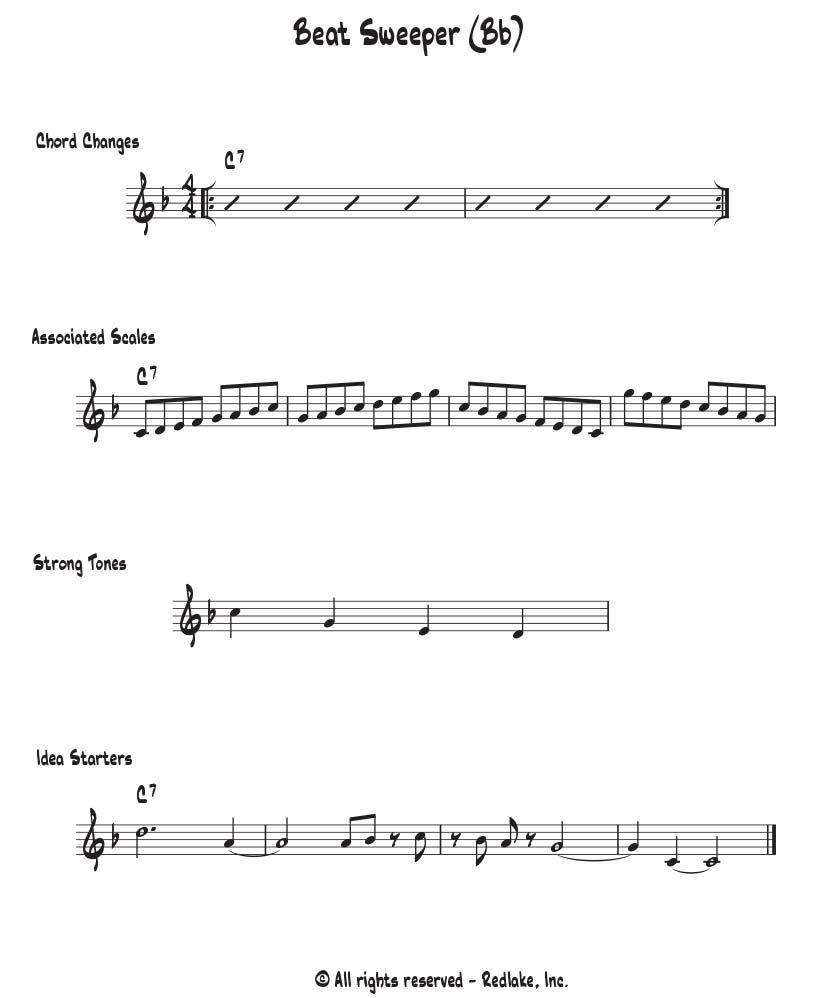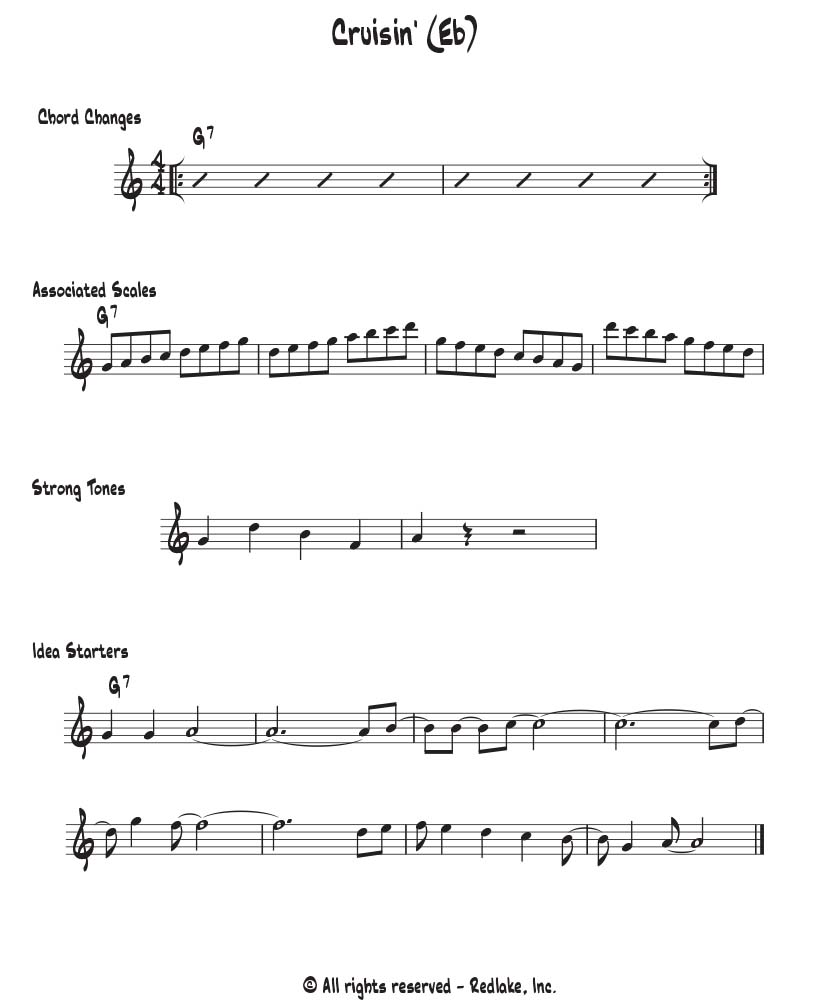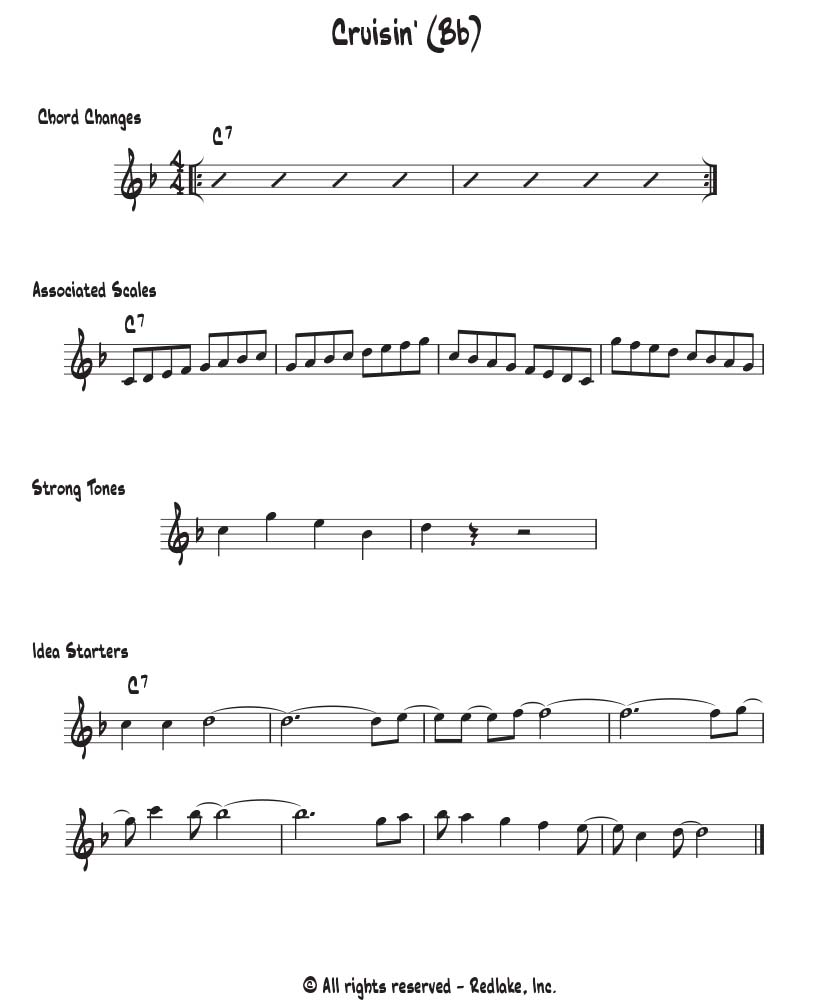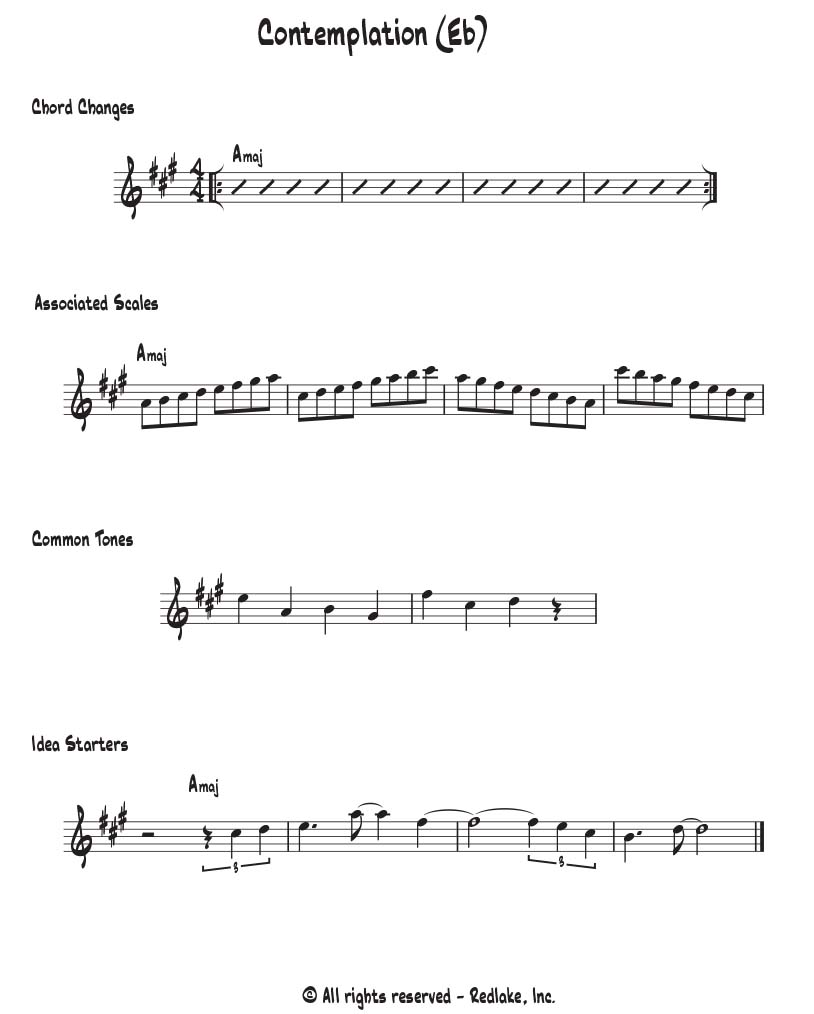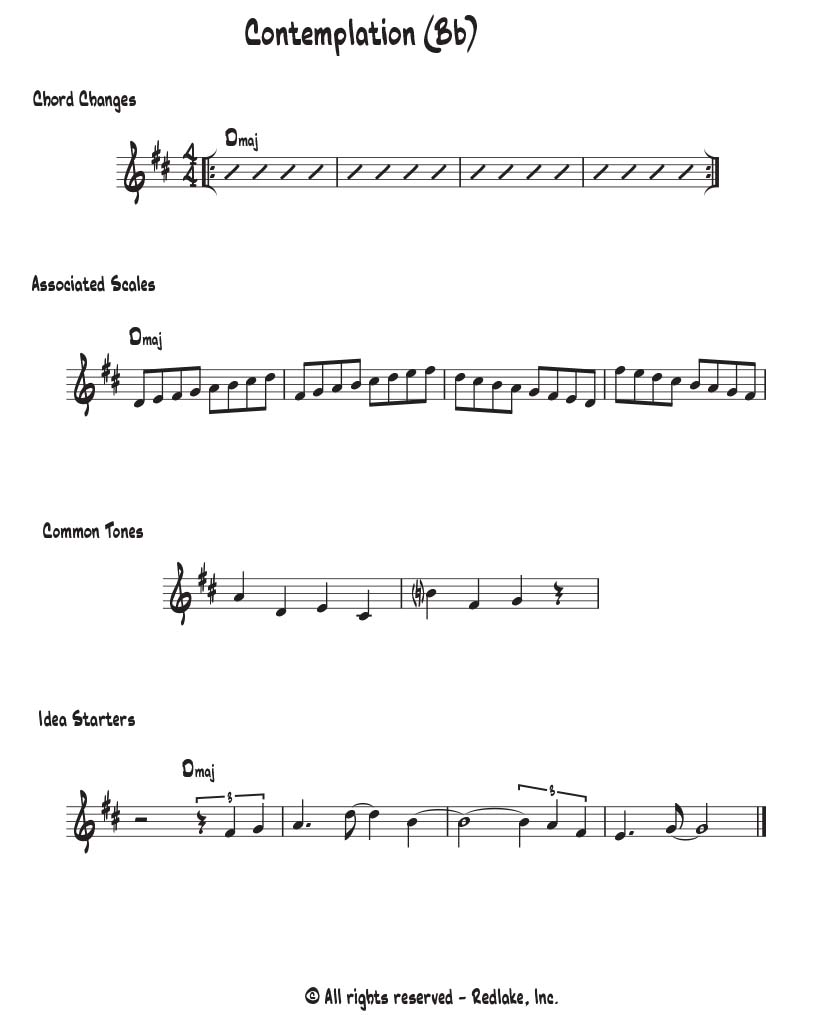Harmonic Anticipation
Let’s work on your skill at anticipation to another level. In order to anticipate the harmonic progression, you must hear it in your mind, not only as it is being played. In other words, can you hear in your imagination the first four bars of All the Things You Are?
This lesson will help you develop that ability with the blues, rhythm changes, and three standard tunes., As with every exercise in this chapter, mastering this skill is a life-long endeavor. Simply going through these videos and these exercises once is simply a brief introduction. My hope is that you will find exercises that you want to add to your practice routine so that in time, you will notice a difference in your playing. I promise you will.
Video transcription
So let’s talk about anticipation. And I must admit that even saying that word, I can kind of hear Carly Simon. But I think that’s a good warm up for this lesson because this is the third aspect of hearing which I think is crucial to improvisation. It’s that ability to anticipate what’s about to happen without actually hearing the chord changes. And I use the term hearing somewhat loosely because the type of hearing I’m referring to is kind of that forward anticipation of upcoming chords and whole sections of the tune over which you’re improvising.
00:50 – 01:14
So in other words, you shouldn’t be relying on the moment each chord is played in order to hear what you’re about to play next. And we’re talking about tunes that, you know, fairly well. I mean, obviously, this is difficult to do with a brand new tune, maybe an original that you’re hearing for the first time, you know, but since much of what I think you’re probably improvising over is our known tunes, we’re going to focus on that.
01:15 – 01:39
Now again, I like to use the traffic analogy and I thought about this and, and I realize why that’s so important to me right now because I’m in the stage of my life where I’m teaching my 15 year old to drive, he’s got his permit. And so I’m sitting in the passenger seat and I’m reminding him, look ahead, look ahead. You see the light, you see the countdown on the crosswalk, you’re going to hit a yellow, You know, I’m teaching him to anticipate as we’re barreling down the road.
01:39 – 02:23
So, you know, when you drive, you’re not just staring at the front of the hood. You know, you’re looking ahead at the upcoming traffic lights, the congestion, maybe there’s an accident coming up, maybe there’s a traffic cop over at the side so that when you’re driving, when you’re driving, you’re not surprised when the car in front of you slows down or stops. Well, I think the same holds true for improvisation. Your musical mind is anticipating the upcoming changes, the modulations, the bridge, the end of the chorus, the end of your solo and so on. And this makes you a better improviser because you’re driving, you’re in control. You’re not at the mercy of each new bar or you know, some constant stream of new events.
02:23 – 02:44
Now, you might be thinking I already do this. I don’t wait to hear the next chord before I jump in and play. And that may be true, but it’s probably because if you played literally like that, you wouldn’t be able to improvise at all. But I think the better question is how, well and how far ahead do you anticipate? Here’s another analogy.
02:45 – 03:15
When someone is telling a story or when you’re telling a story and you have an idea where that story is going to lead you, you tell it better. You know, as you’re telling the story, you know, where you’re going, you know, as you get closer to the end, you have a sense of the punch line or the point of the story. And we’ve all heard bad storytellers, right? They stop and they stall and they correct details about what they just said and then they forget where they left off. They don’t have a clear idea of where they’re going as they’re going.
03:16 – 04:02
Now, of course, you probably don’t start a solo with a clear and exact plan for every note. I wouldn’t expect that that’s not even improvising, but the longer range your mind projects as you play your solo, I think the more uh congruent it will sound and the easier time the listener is gonna have in following your musical story that you’re telling. OK. And I think this shows up in the form of a solo. So listen to great solos and you’ll hear very deliberate form from beginning to end. The form itself is different in every solo, but all really good solos have a deliberate or, or maybe we call it a purposeful form because, you know, good improvisation is better than, you know, start play a bunch of notes, stop playing those notes.
04:03 – 04:42
So let me give you an exercise that I think is going to give you a better sense of how well you do that and it’s gonna help strengthen the muscles of you doing that. And I’m gonna use the chords. I’m gonna use a couple of choruses from a B flat blues. So you’ll hear the rhythm section begin playing the changes and then at certain key points that I’ve cut out, you’re going to only hear the drums, the bass guitar and piano will drop out and only the drums are going to keep the time your job is to keep the flow of the musical line even though you no longer have the guidance of the chordal instruments. It’s kind of like stop time, but it’s a little more erratic than that.
04:42 – 05:21
Now, in the companion materials is another eBooklet. Now, this one is called Stop Harmony Progressions for Musical Anticipation and Flow. Now, that’s a long title I know, but it describes it pretty well. And the point of these exercises is to provide you with a vehicle for building your self reliance on anticipating the changes for, for flow and for making for a good improvisational solo. And I suppose the ultimate exercise is for you to play over a tune by yourself without any rhythm section. Just the whole thing is anticipating and hearing in your mind the chords.
05:22 – 05:39
And I’ll let you work on that on your own. But let me show you first, let me play through this exercise first and while I play, I’m gonna highlight the bars so you can follow the places that I have to anticipate without the help of the chord changes. All right. And let’s see what we can do with that.
06:39 – 07:07
Notice that I kept the flow of the melodic ideas going. Even though at times I wasn’t, you know, guided by the harming of the chords. I’d like to believe that I was pretty transparent in terms of, you know, if you didn’t know what I was doing, you wouldn’t know that there are holes in the piano bass and drums. One example is at the end of the chorus where I had a vision for where I was going to go to lead into the top of next.
